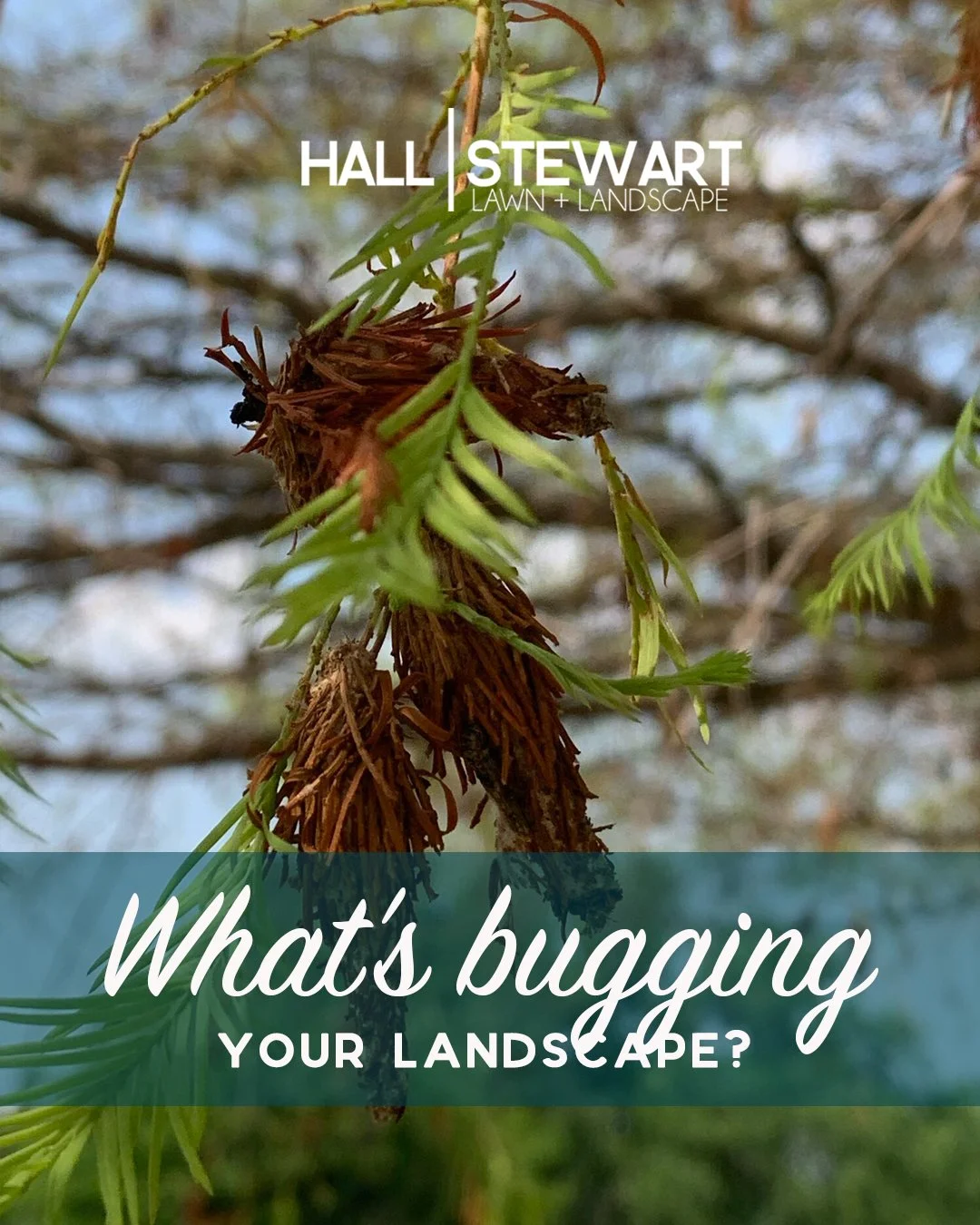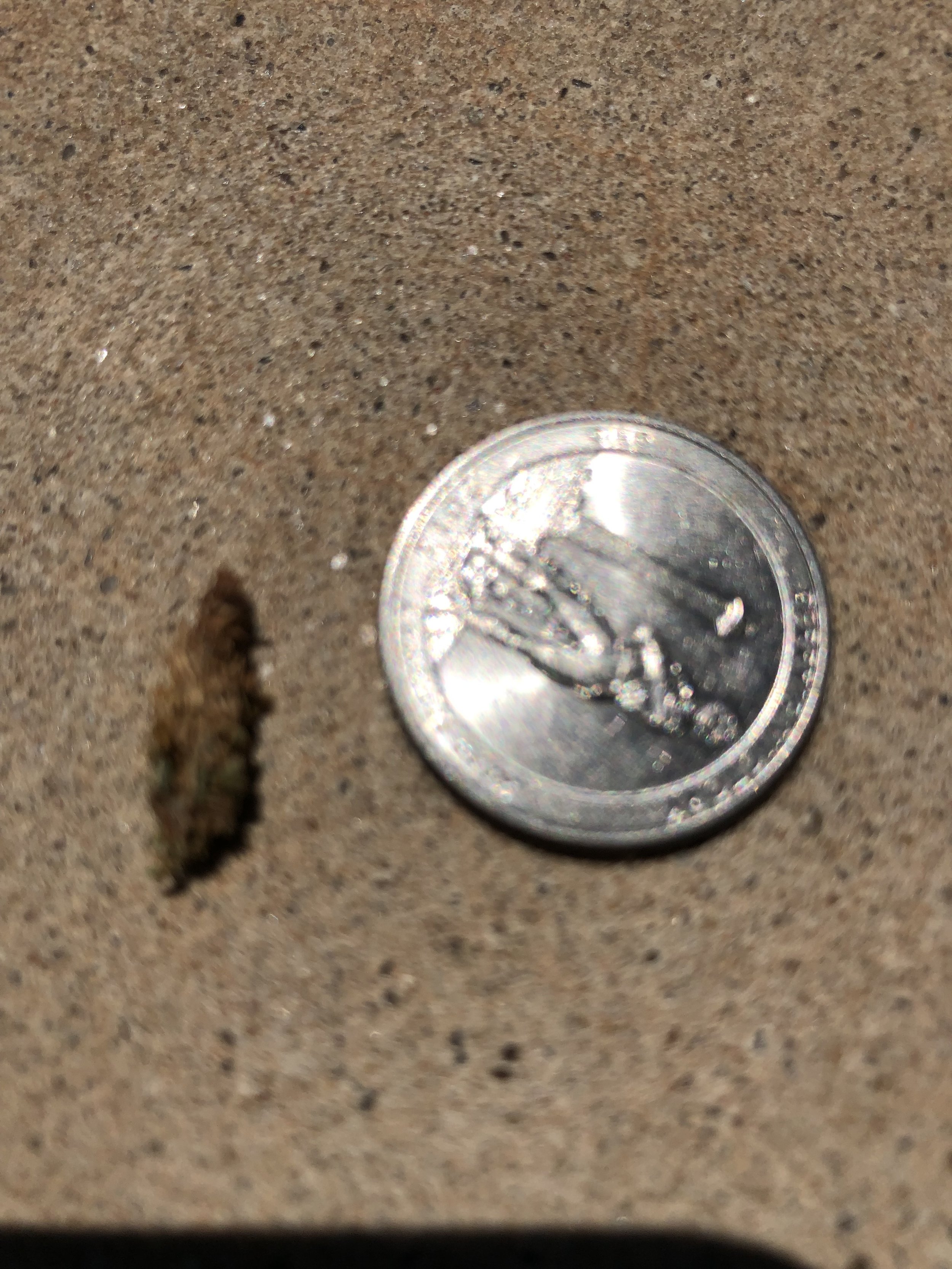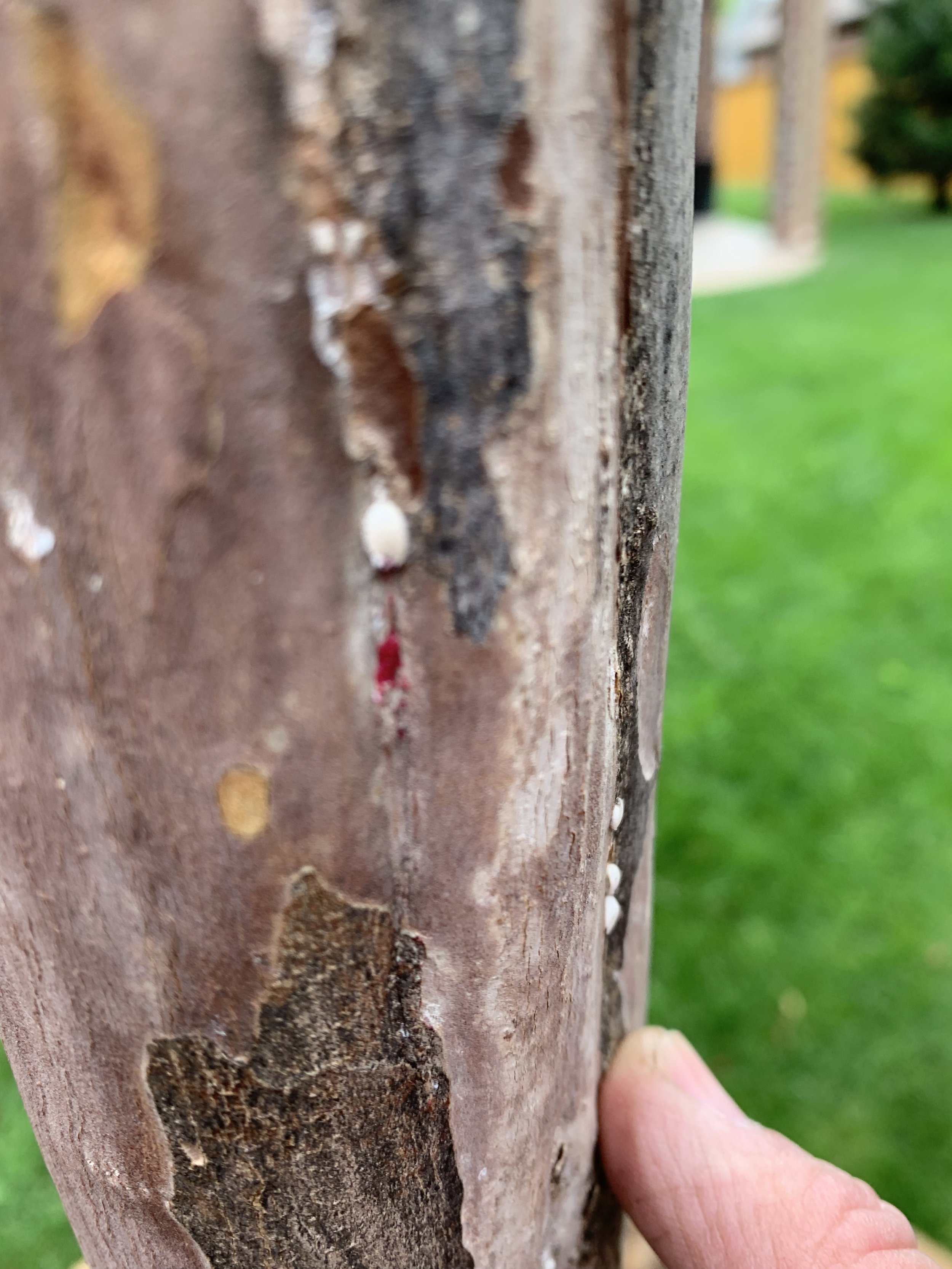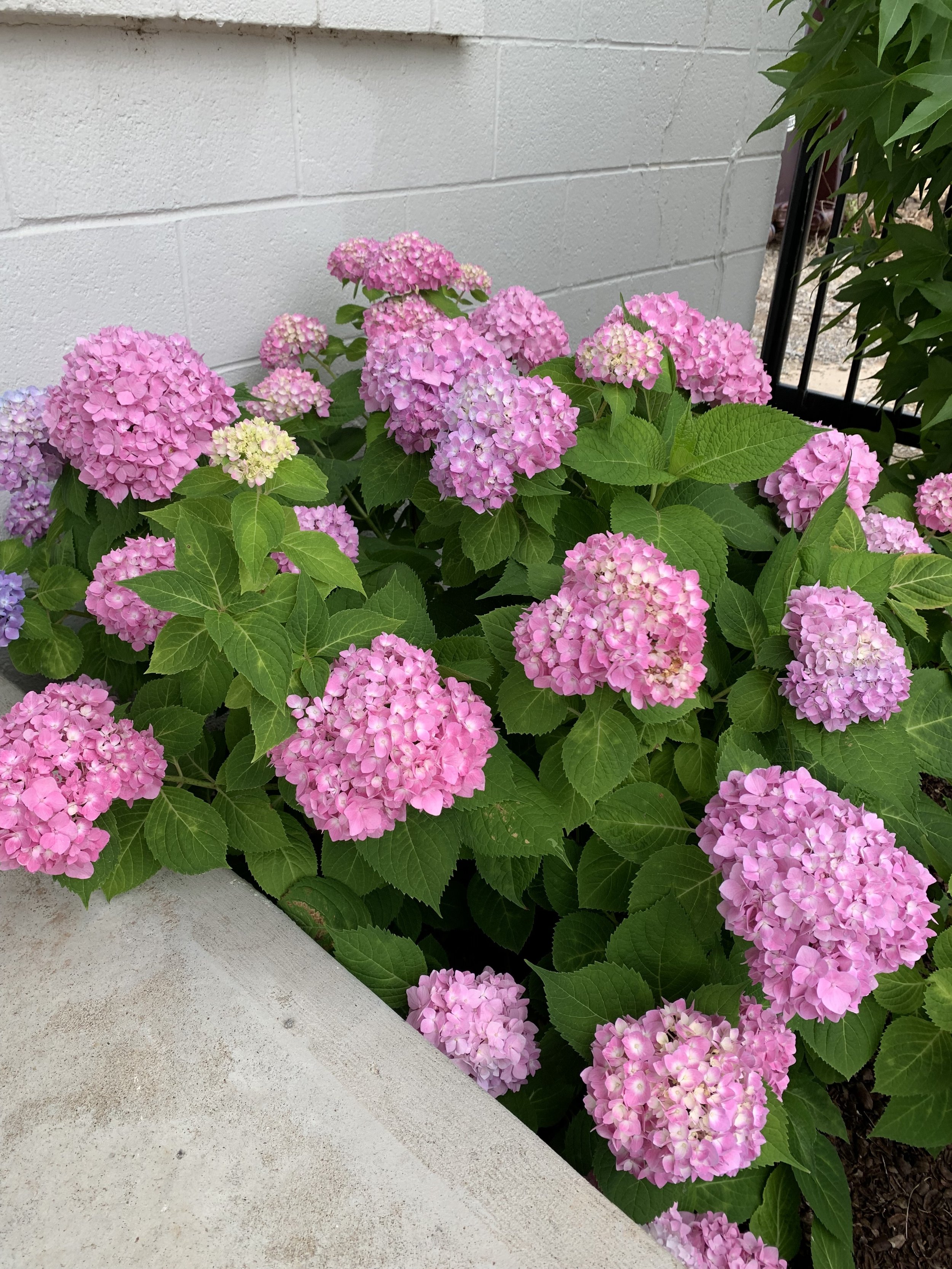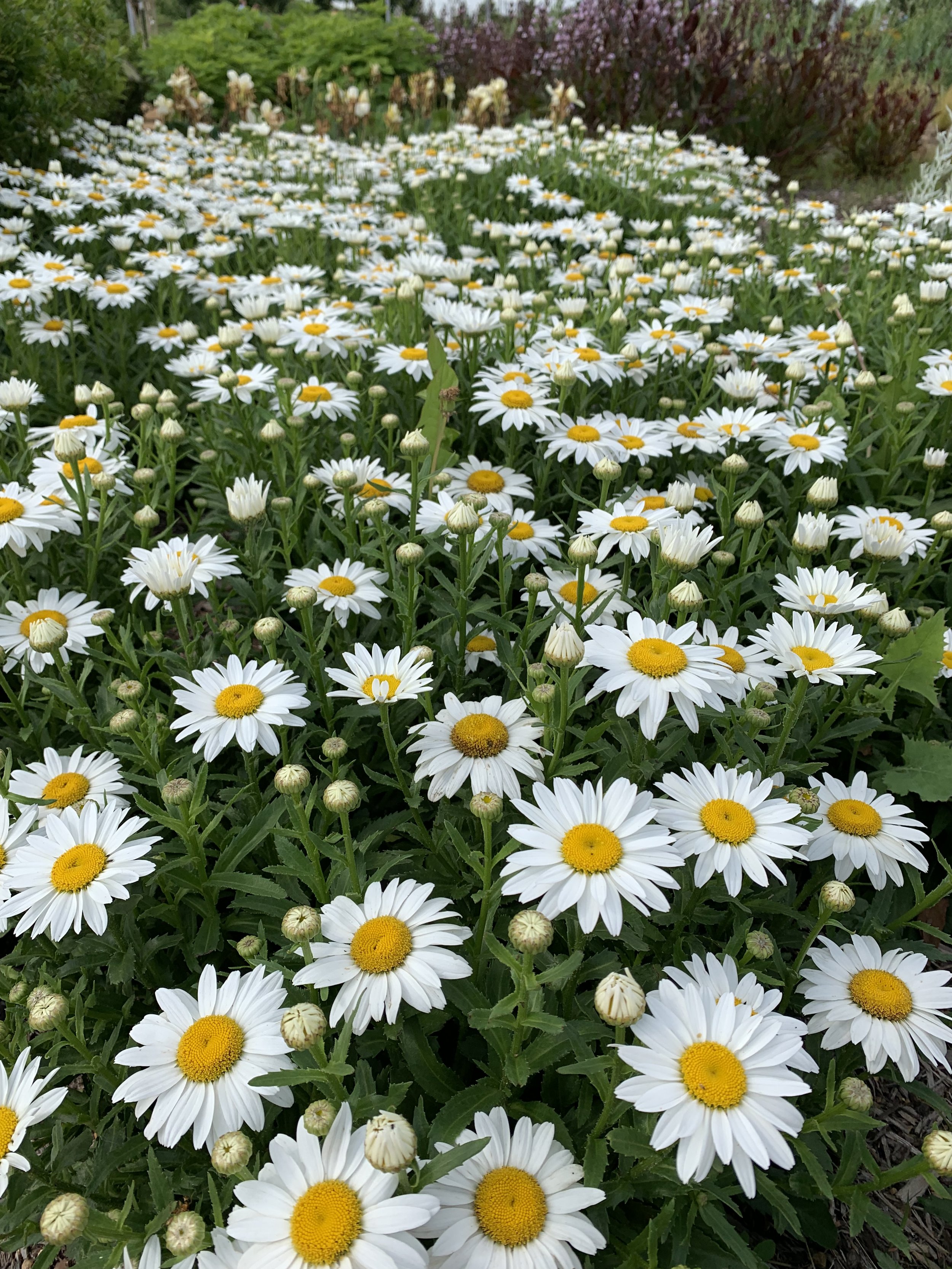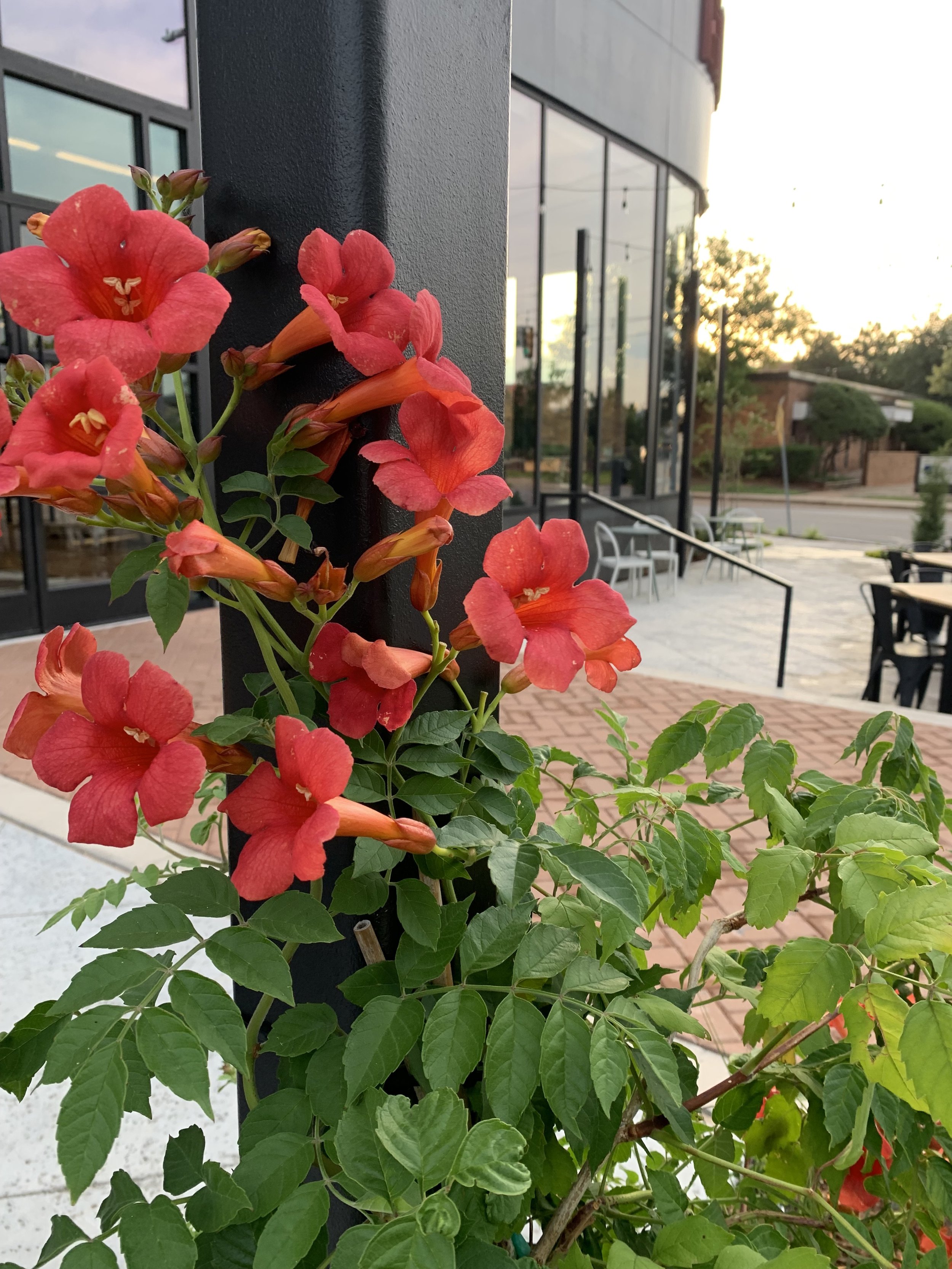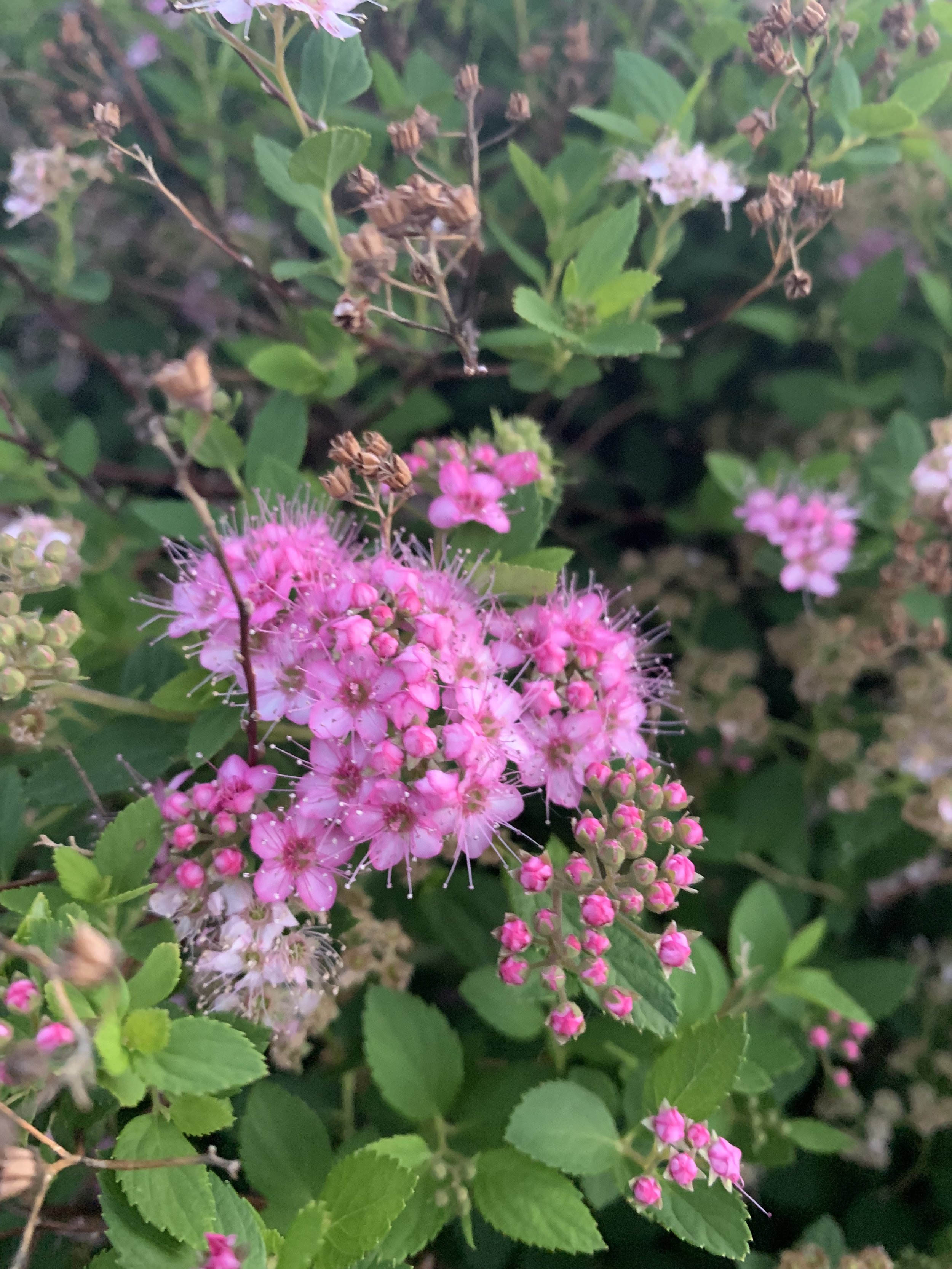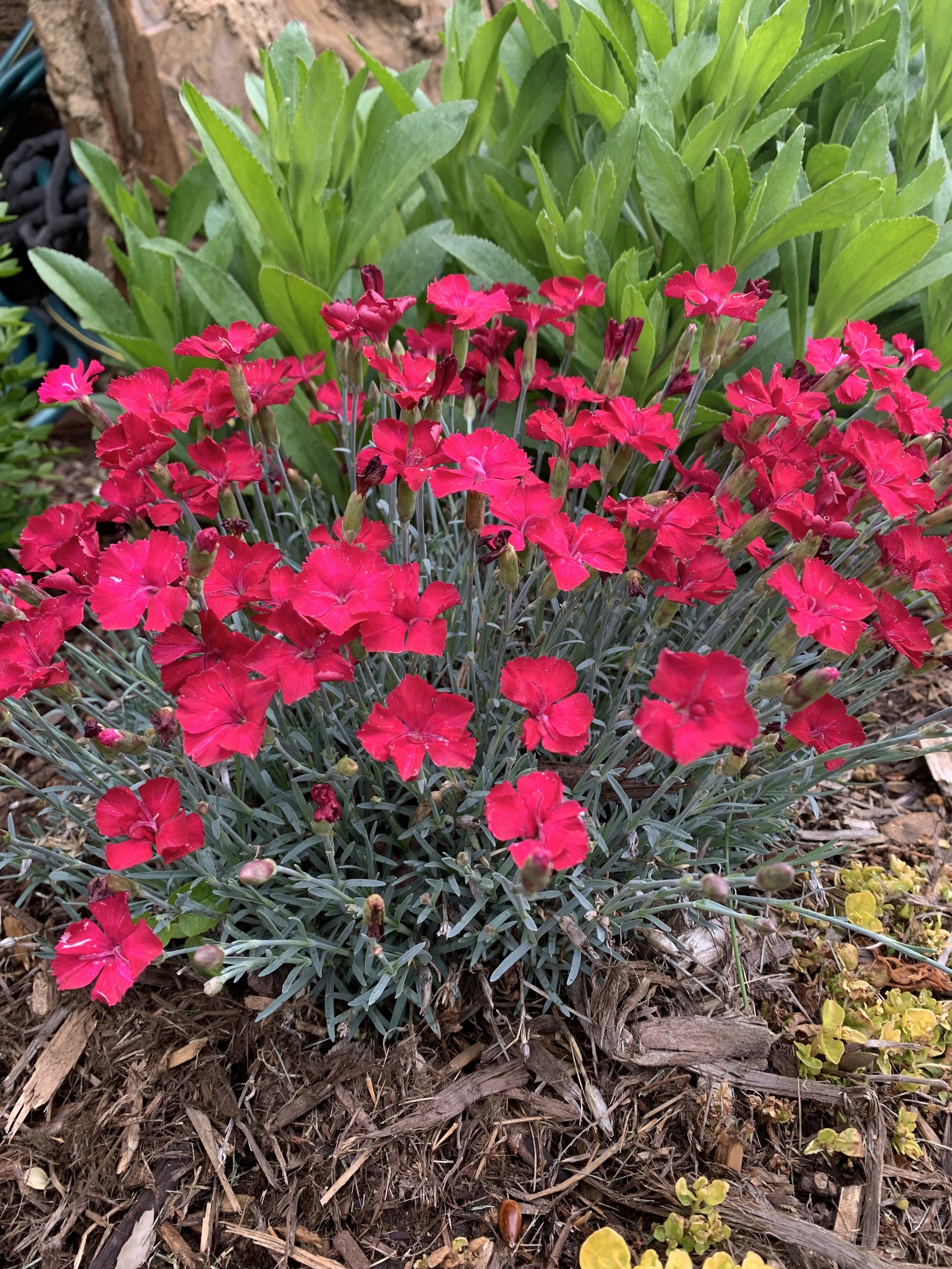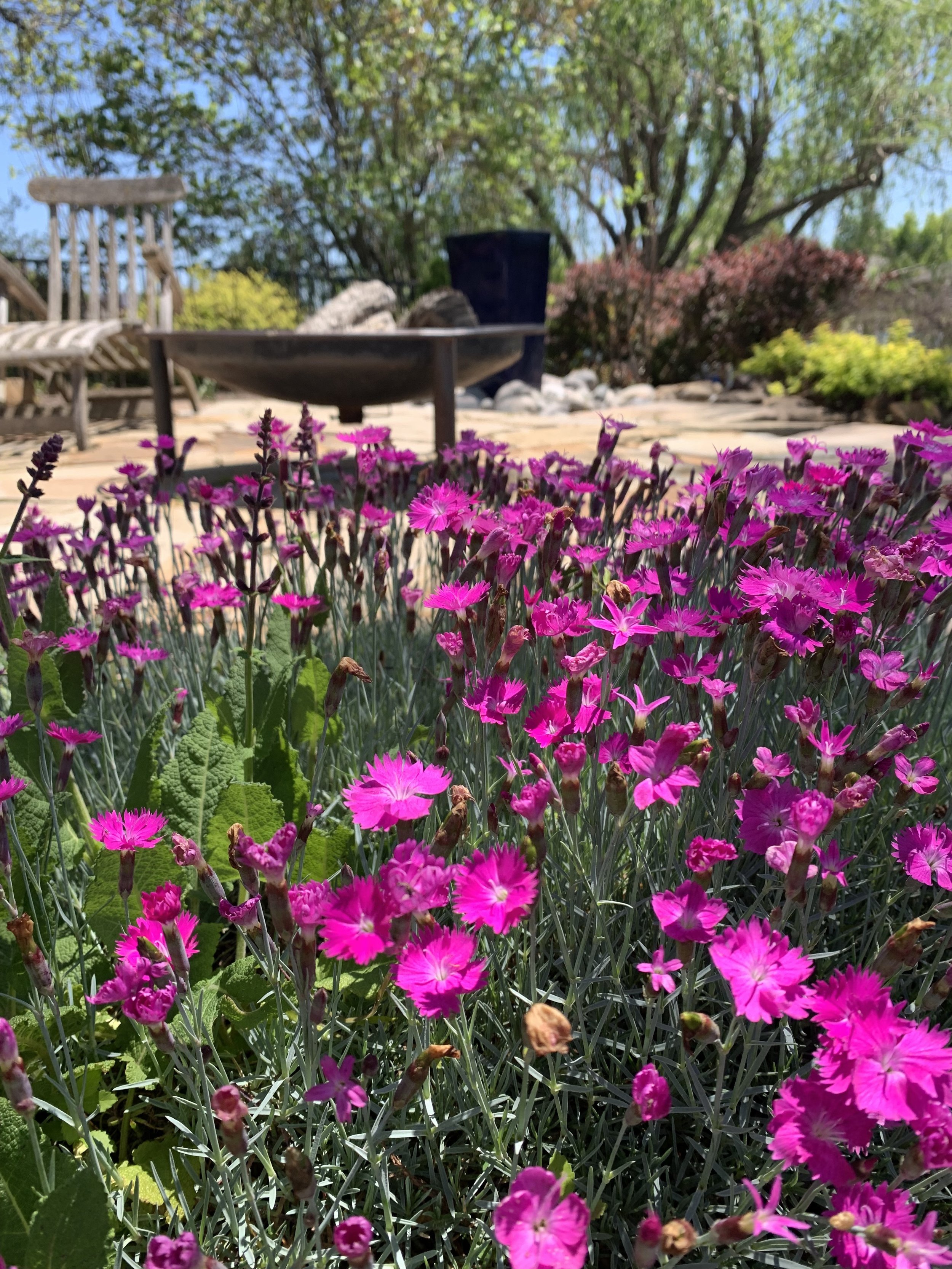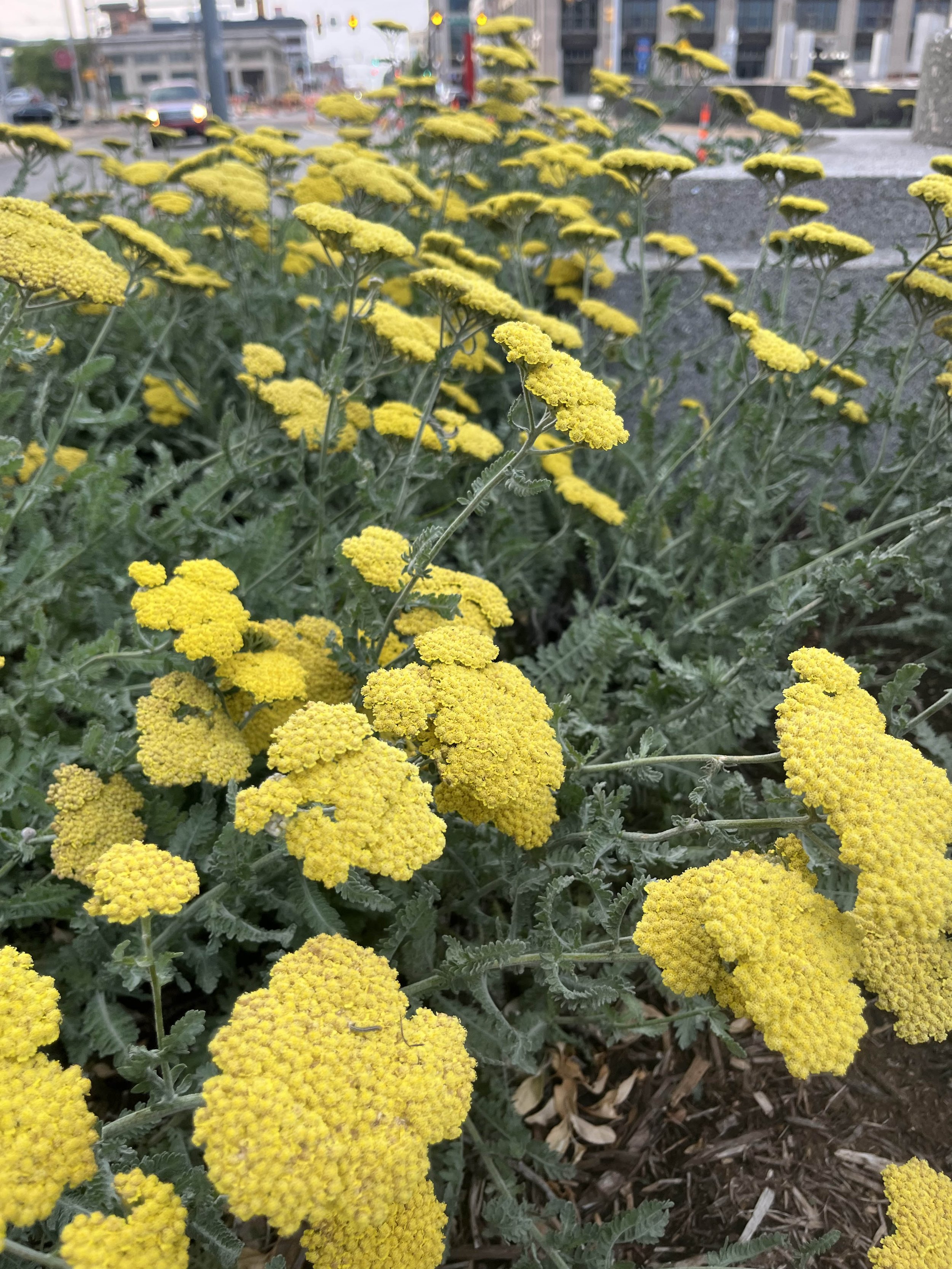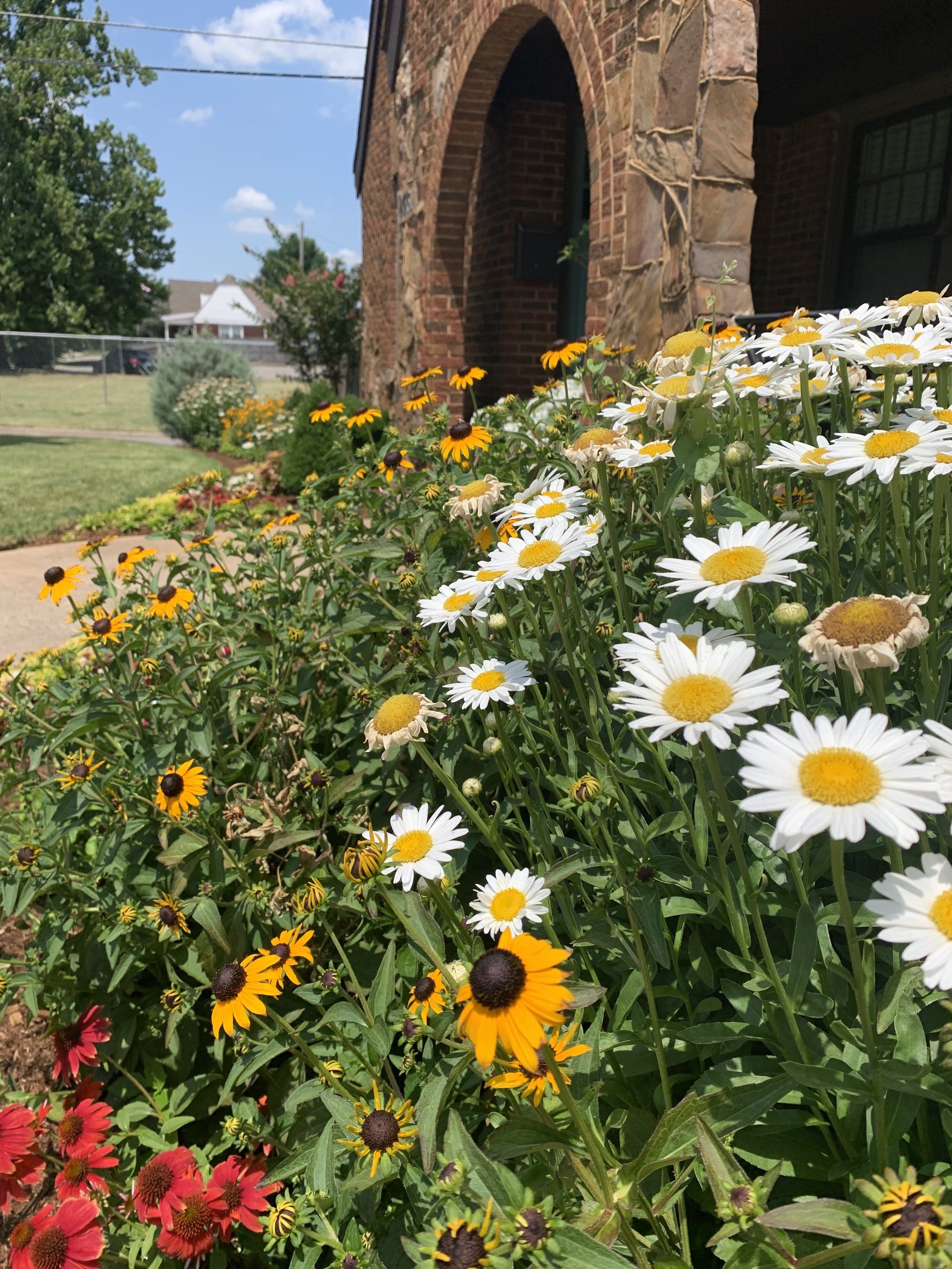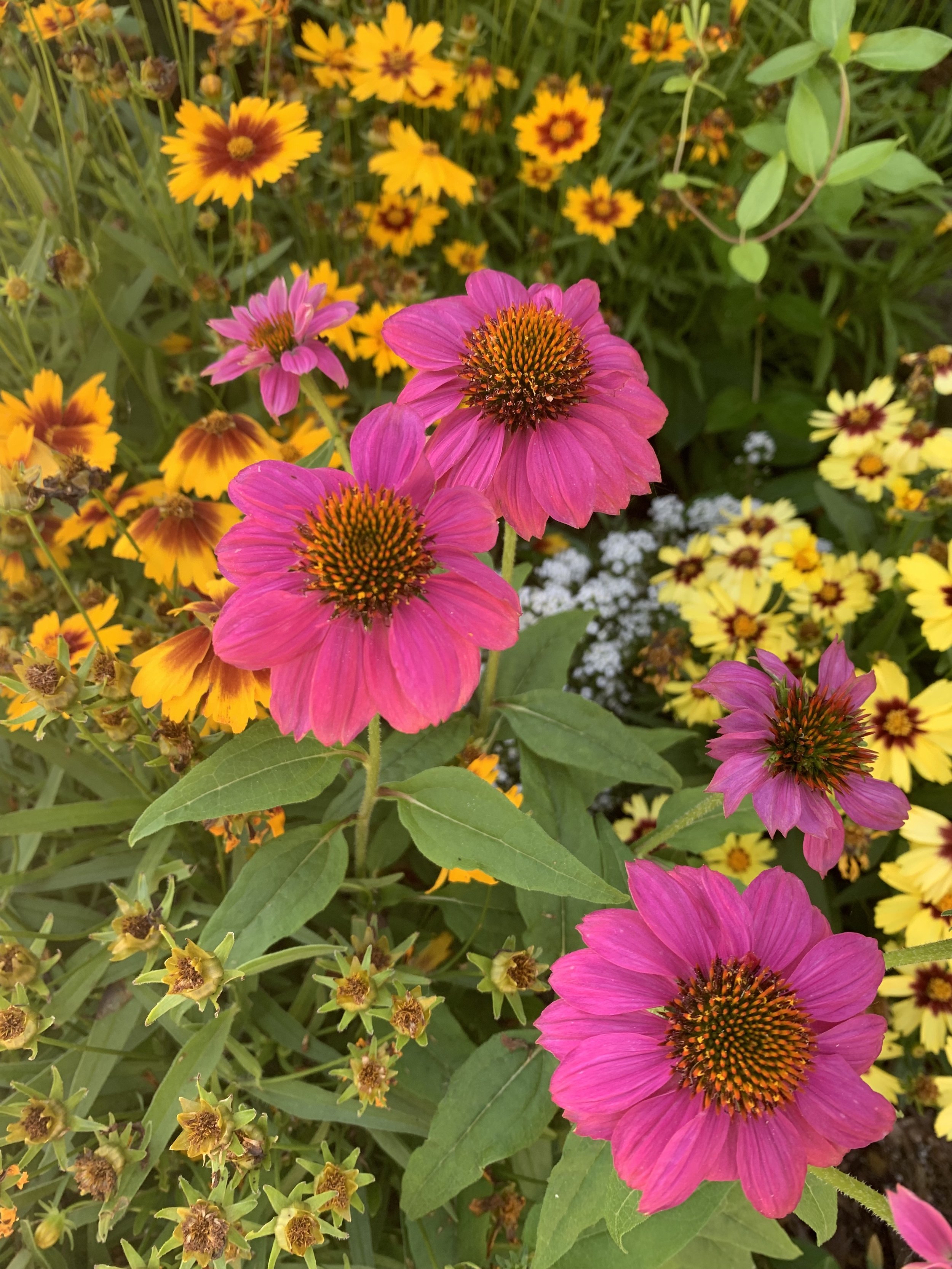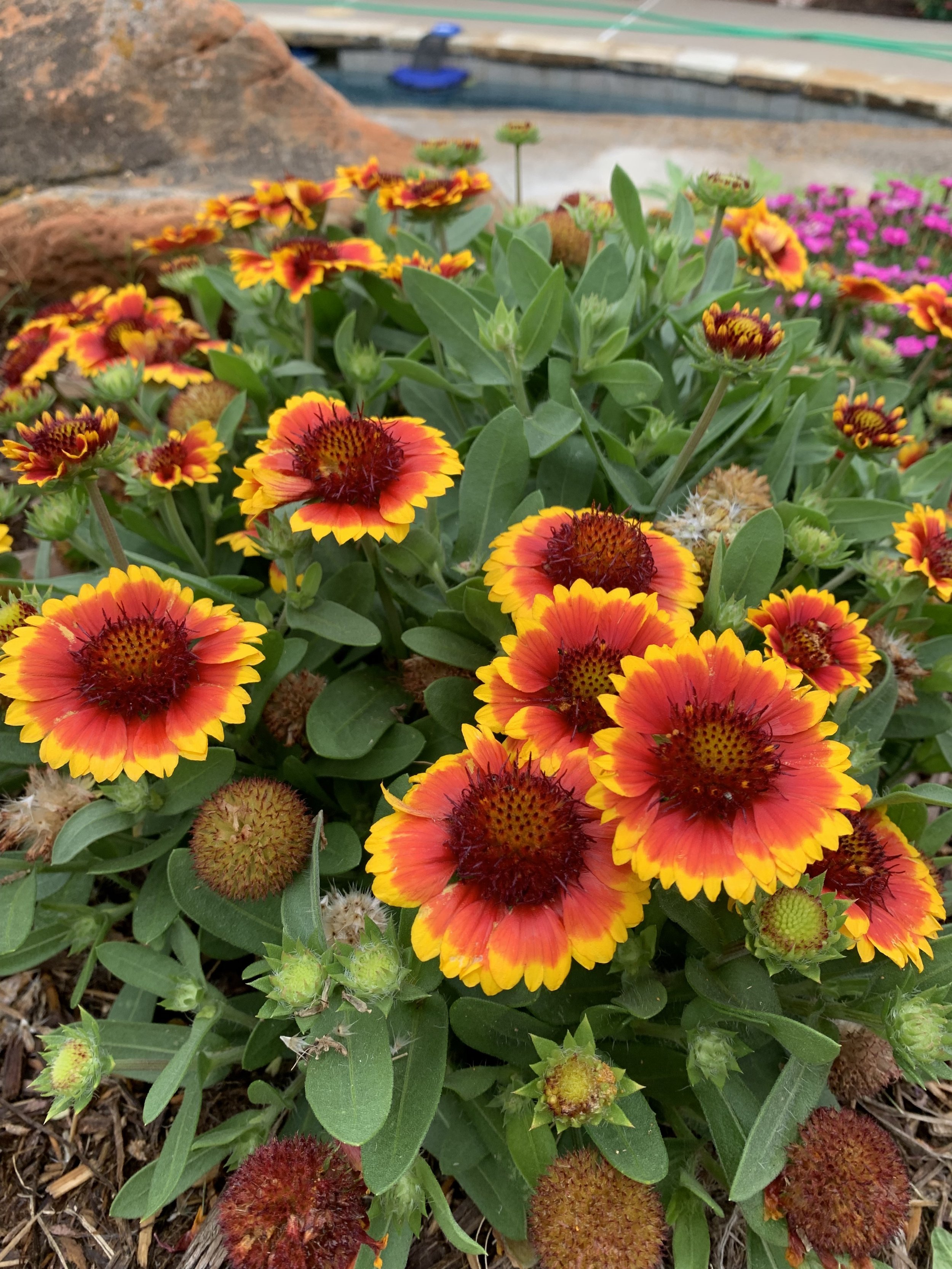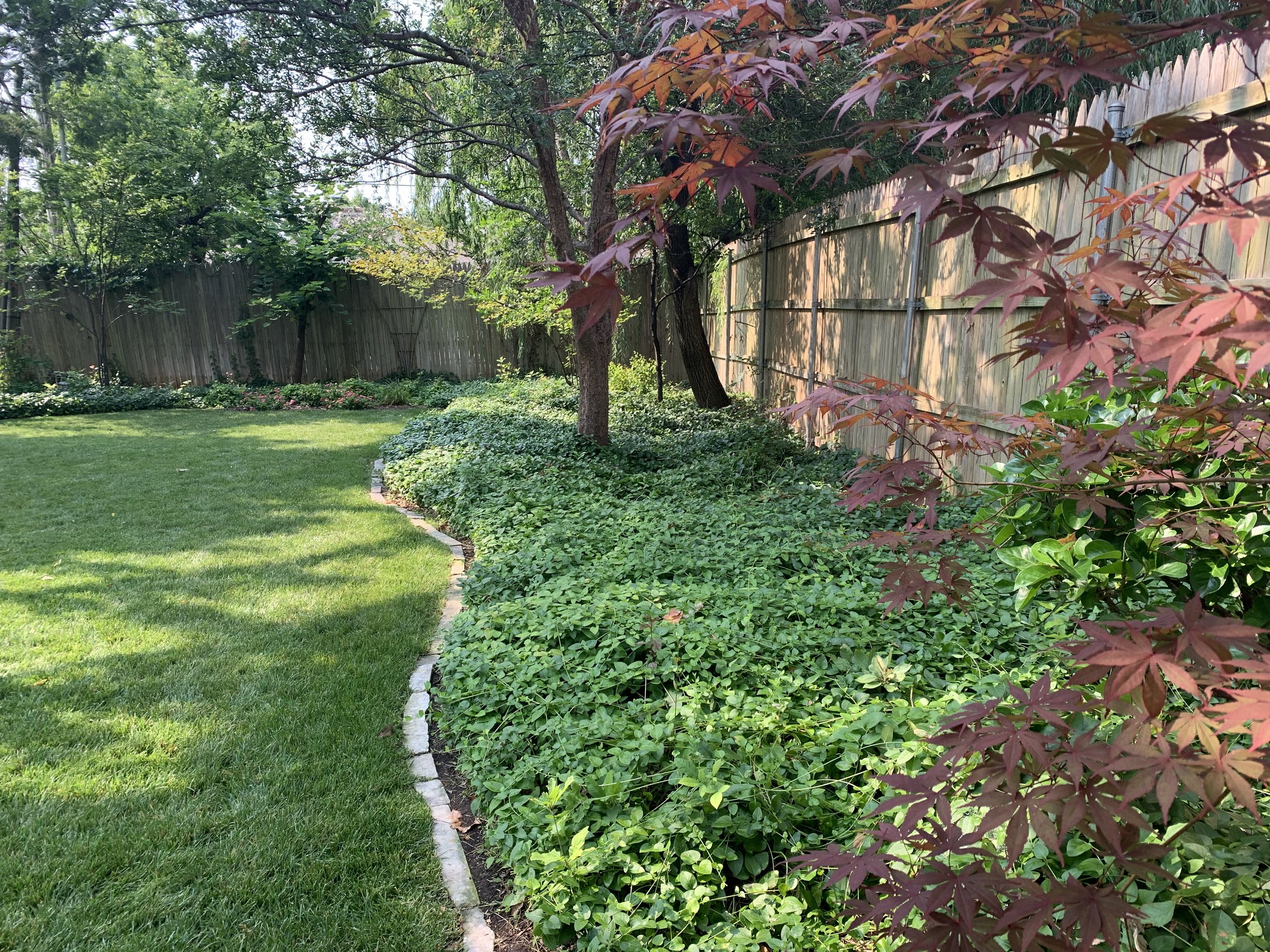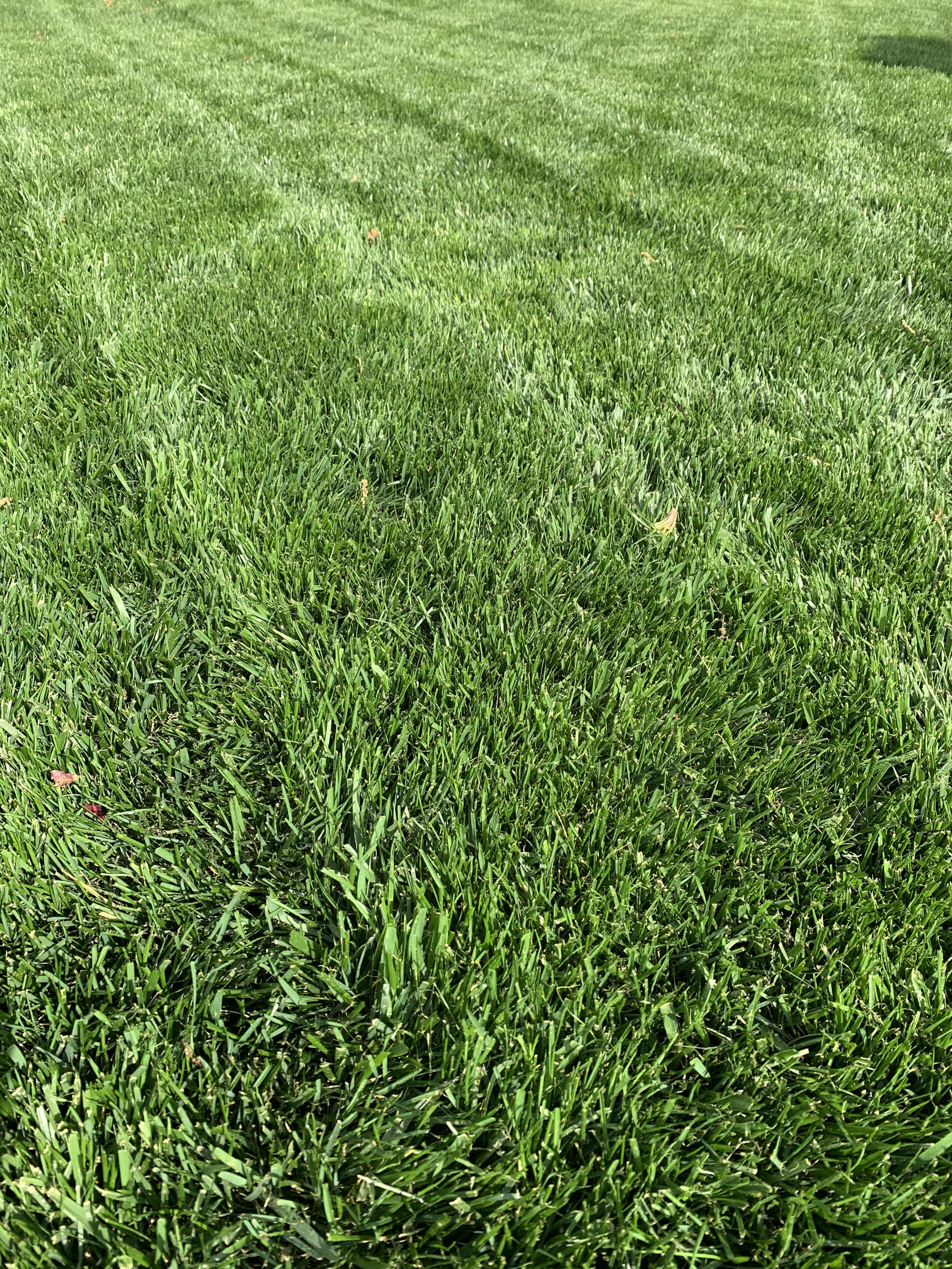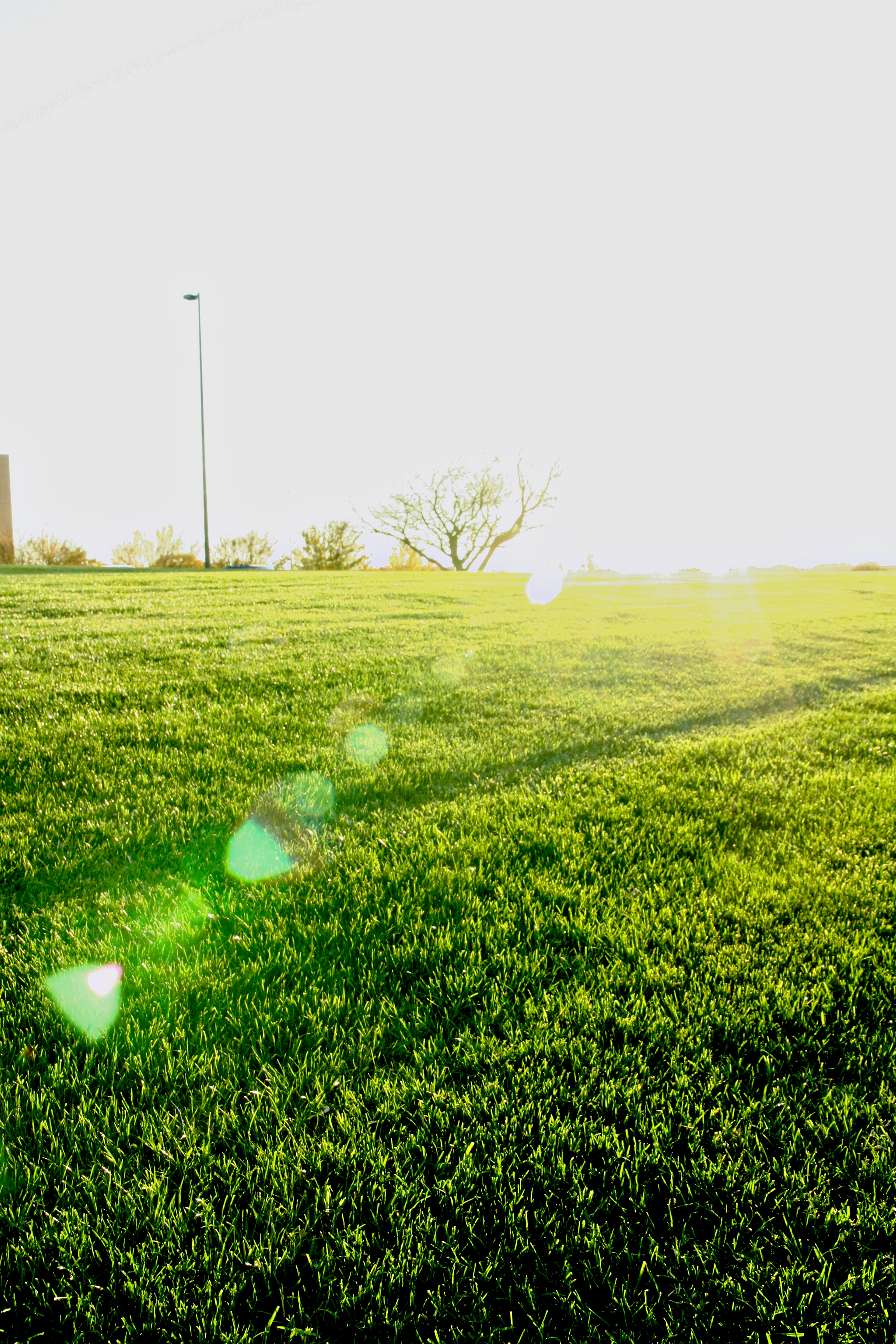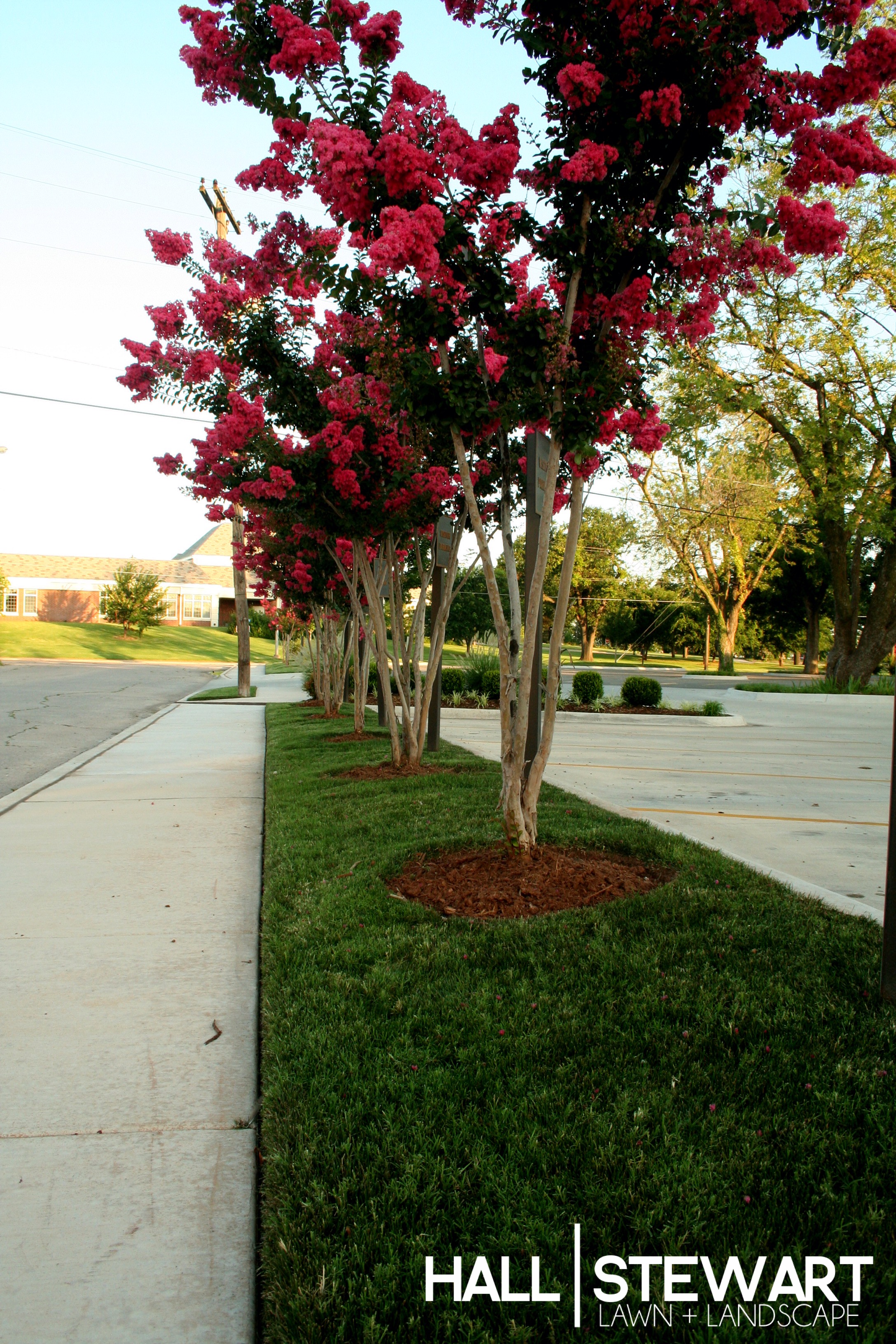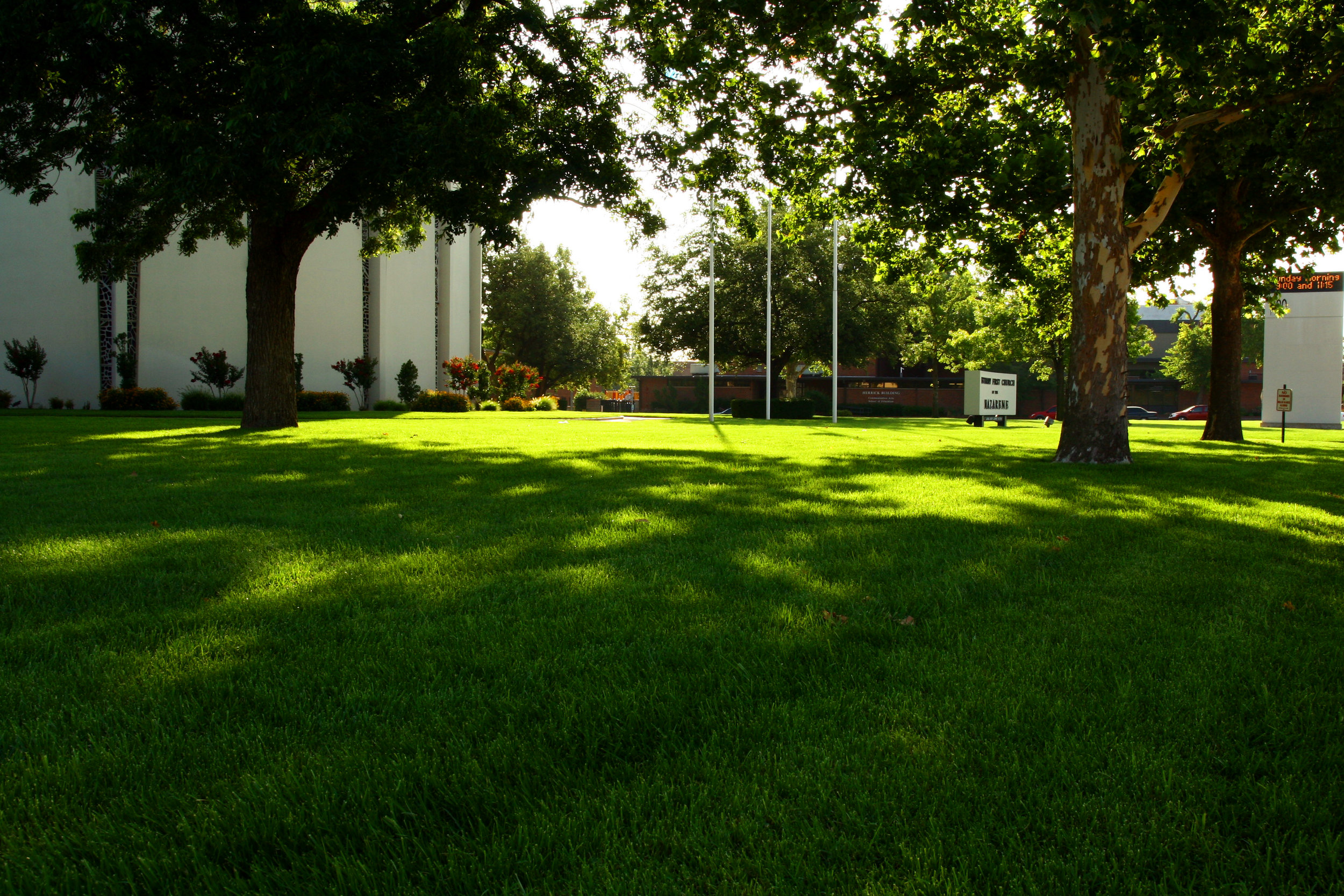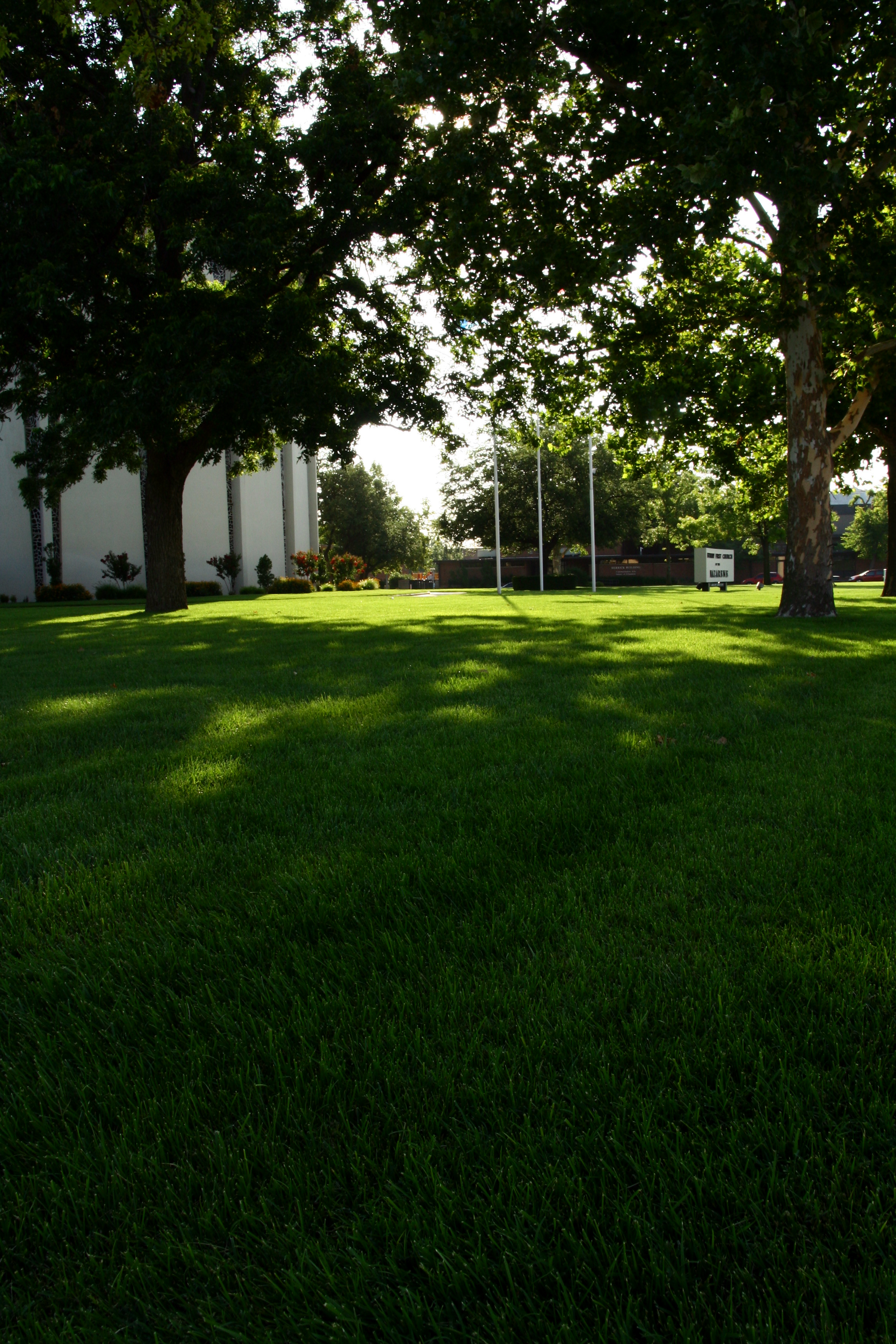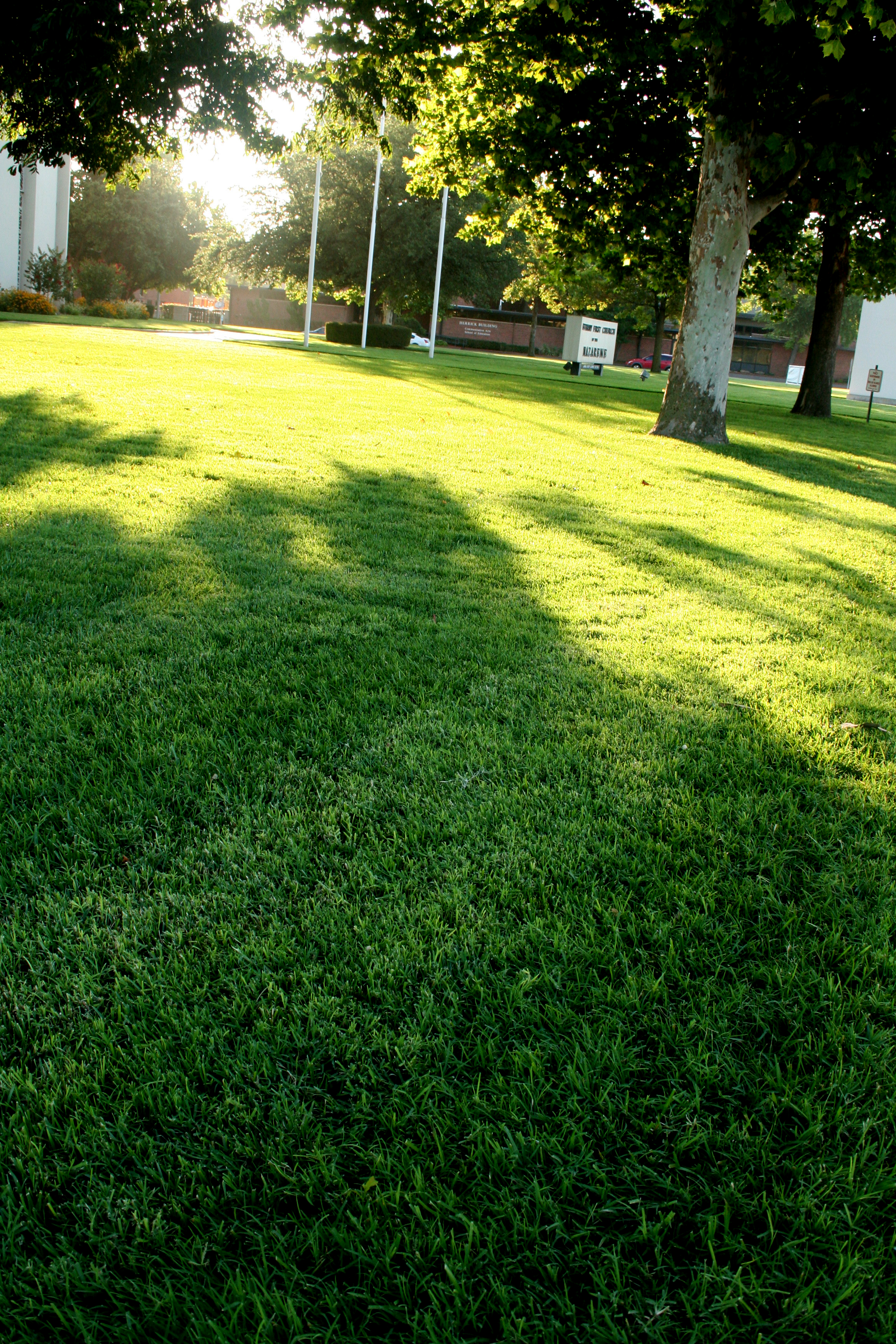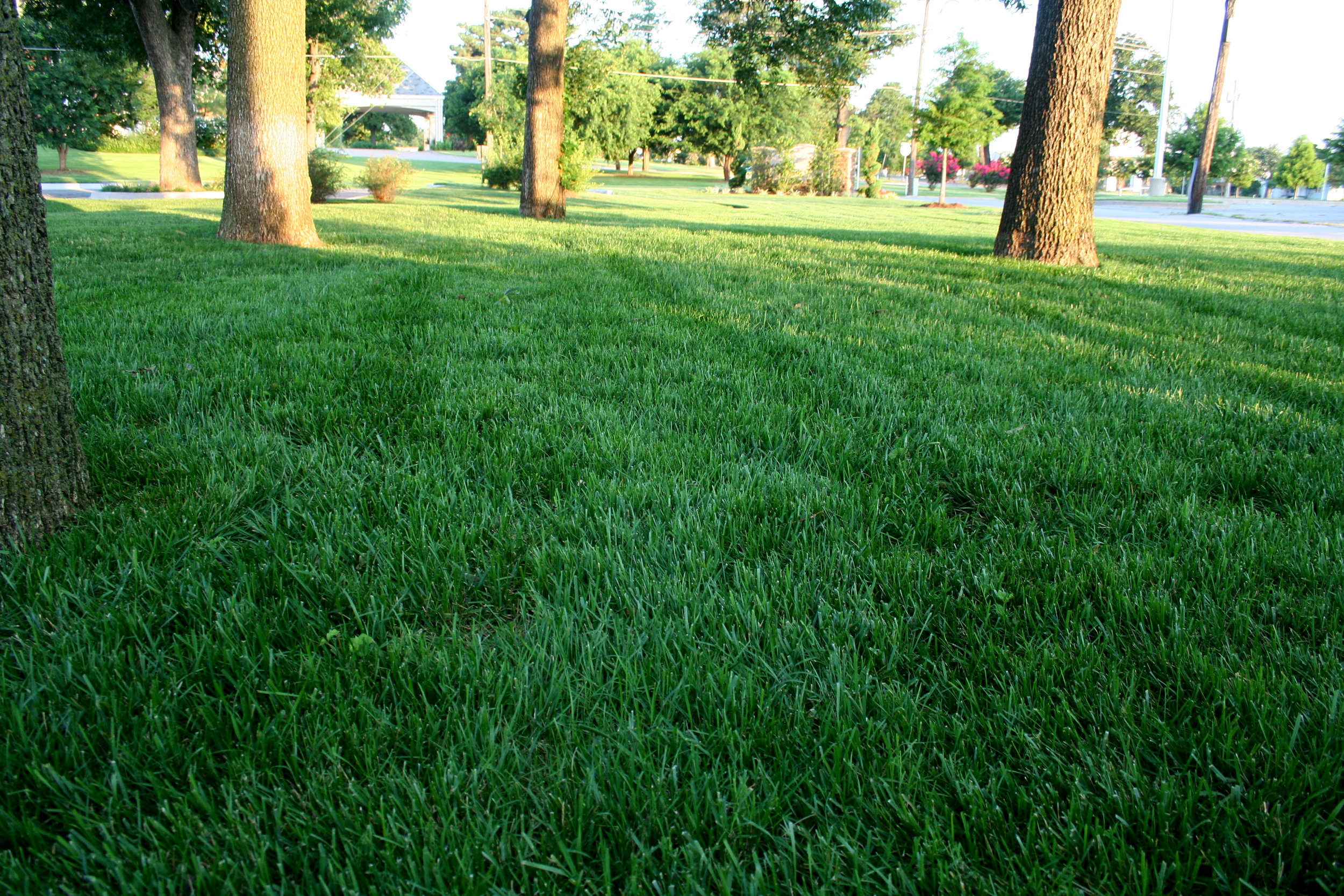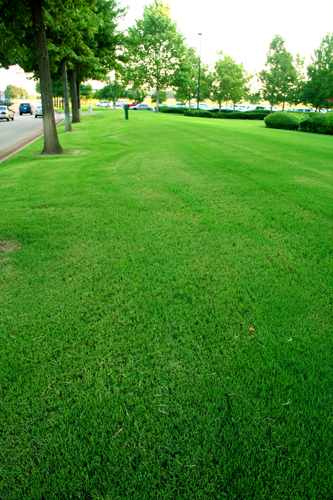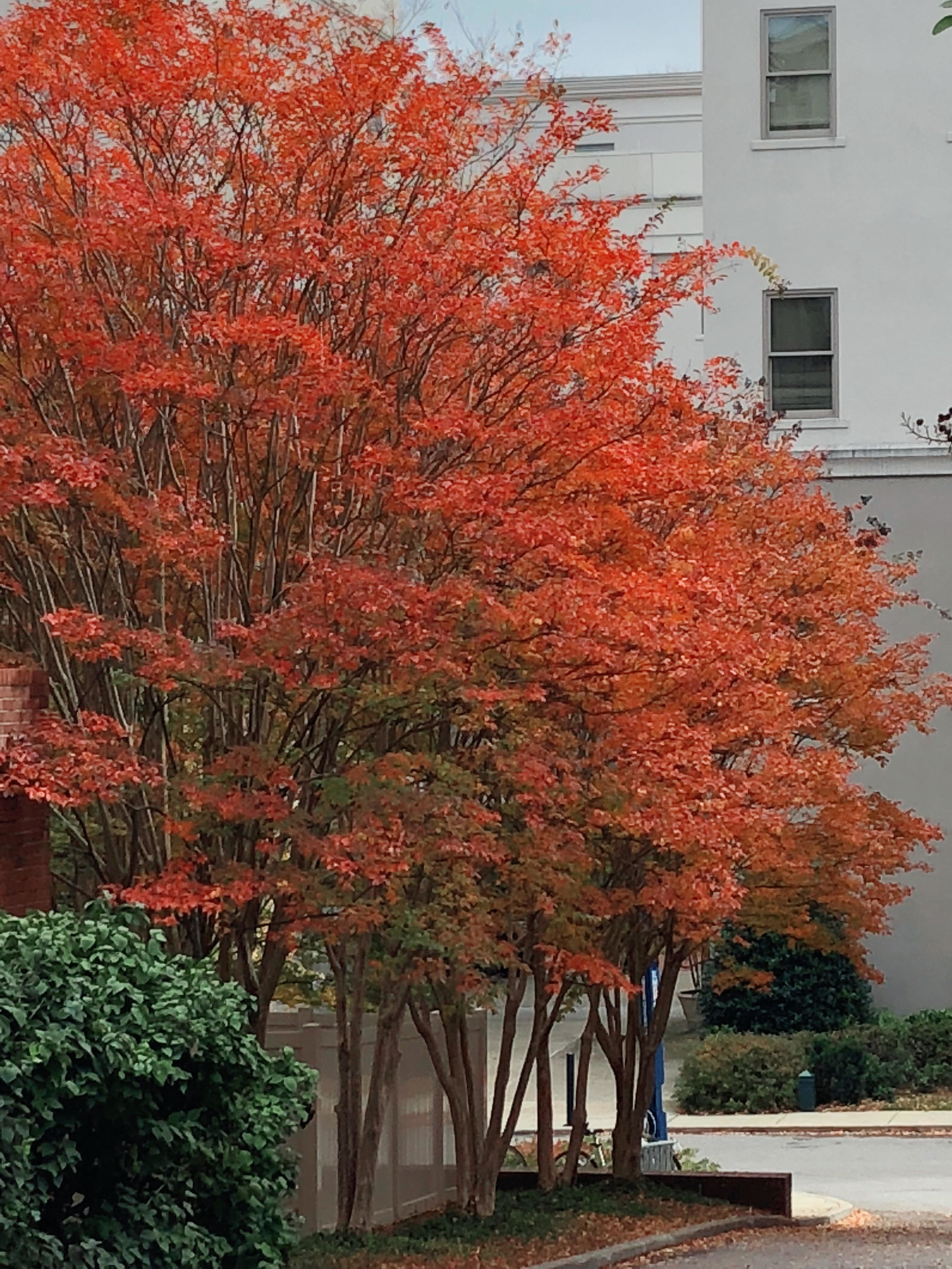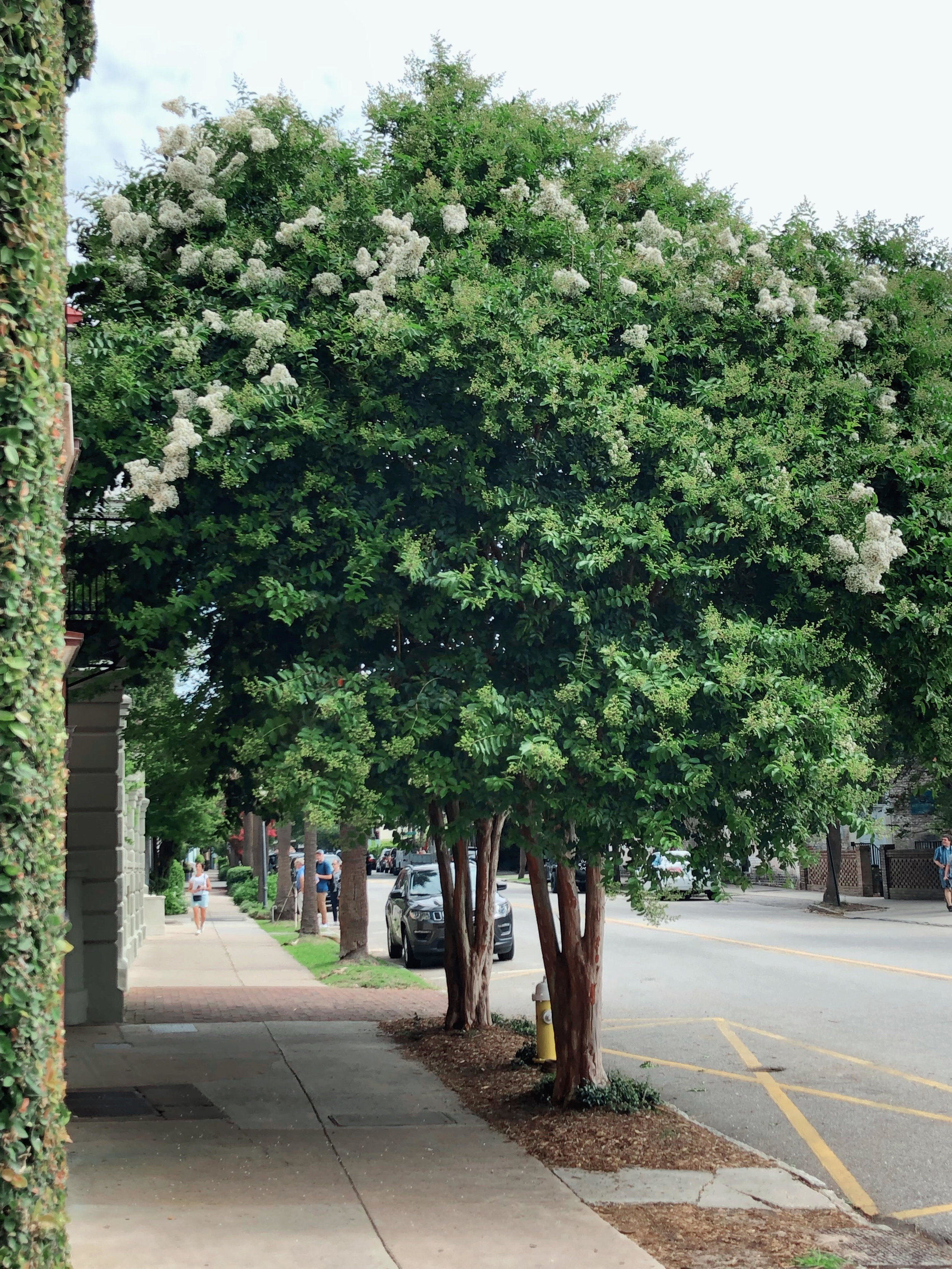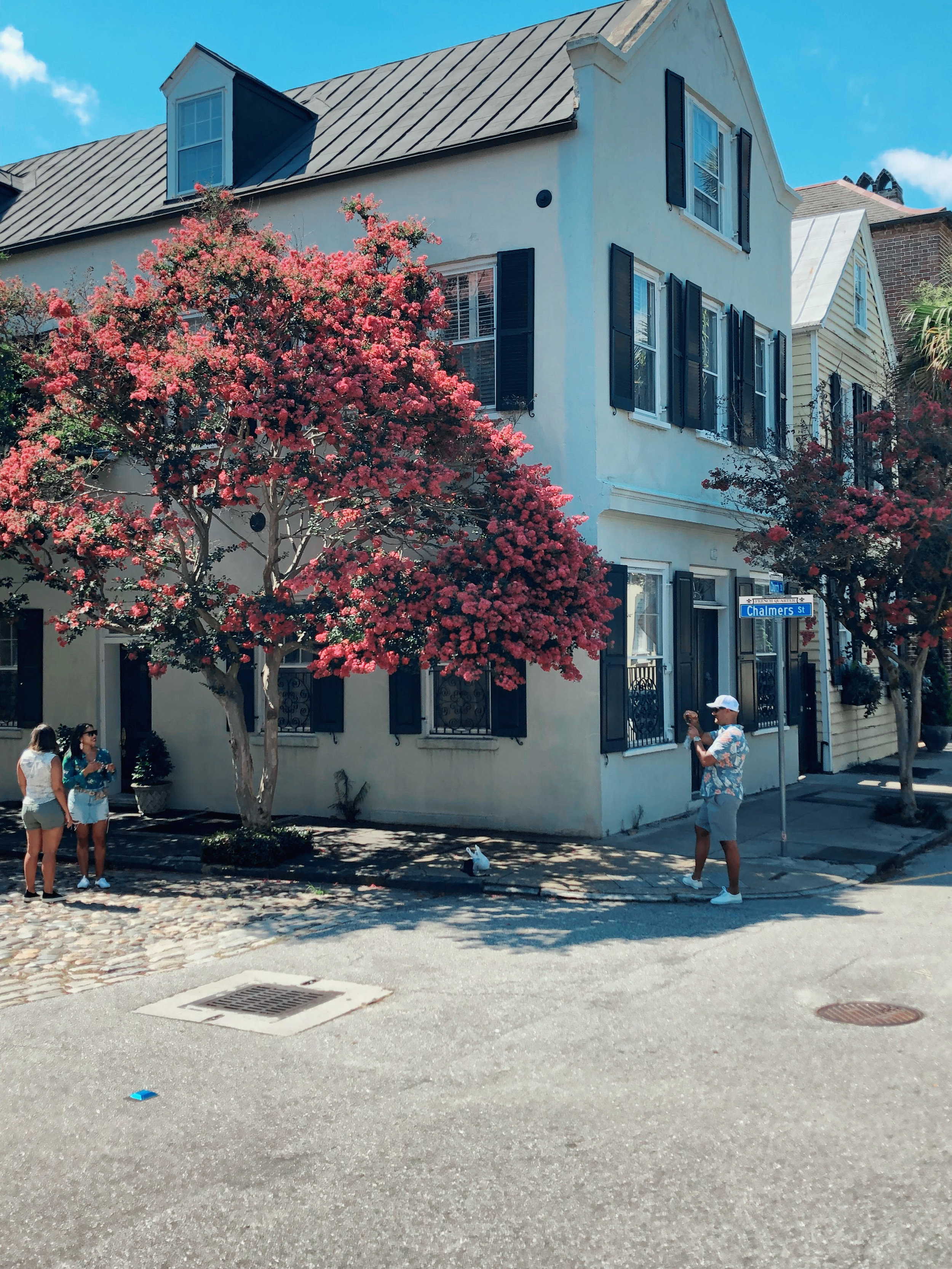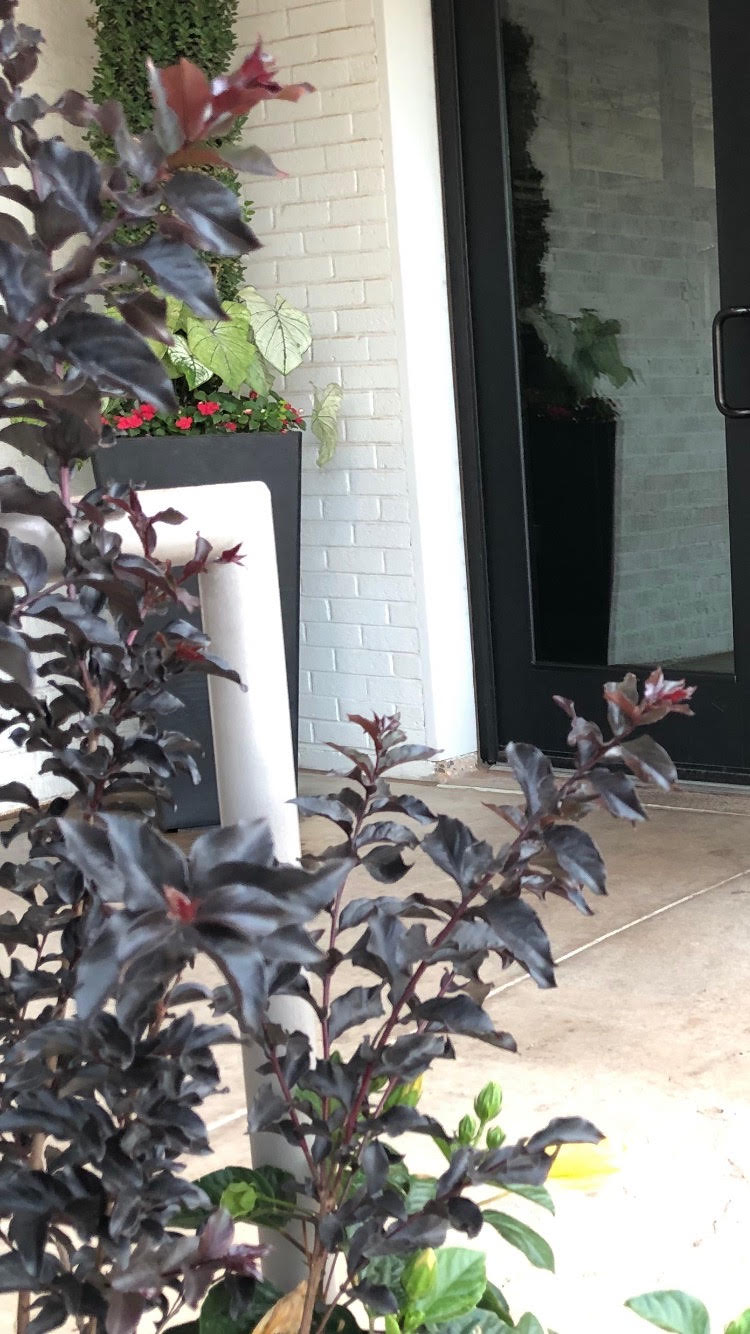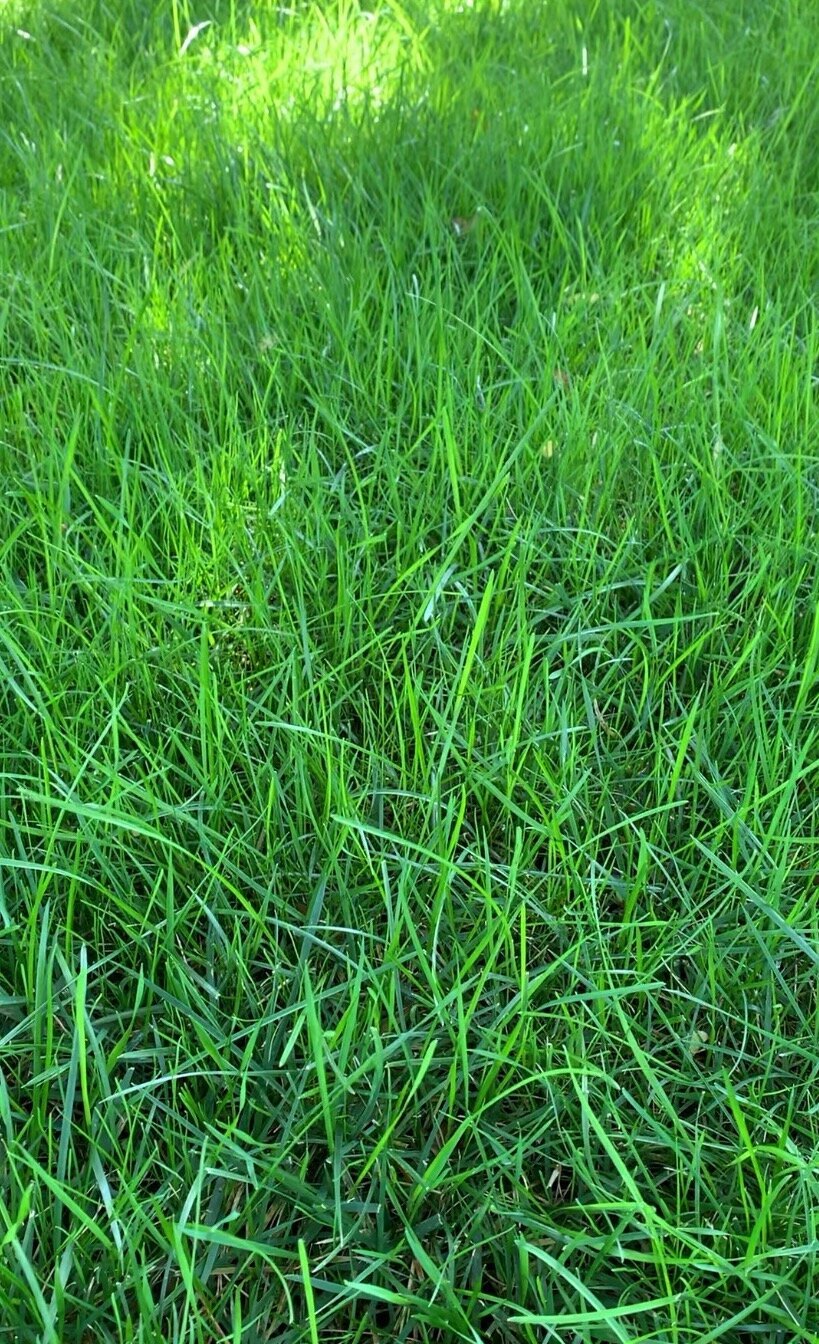
What’s bugging your landscape?
In last week’s July Lawn & Landscape Tips, we touched briefly on common insect issues at this time of the summer. This week lets dive in a little deeper.
Healthy landscapes are a result of an Integrated Pest Management program.
The first step of an IPM approach is maintaining healthy plant material with proper watering, feeding and pruning. Insect activity increases on plant material that is already stressed.
The second step is simply monitoring your plants. Weekly observation is critically important. Does the overall plant color look healthy? How do the leaves look?
Our landscapes represent large investments in both time and money. They add curb appeal and provide enormous benefits to the environment.
It is important that we do all we can to keep them healthy and growing.
Here are a few of the problems that we are either currently seeing in landscapes, or we have on our watch list:
Be on the lookout for any plants that don’t look their best. Notice the slight color difference between these two Taylor Junipers? After close inspection, bagworms were found feeding on the one on the left.
Bagworms
Timing - Eggs hatch in May and they remain active through September.
½-2” long spindle shaped bag wrapped in the foliage of the host plant. Young bagworms are very hard to spot.
Favorite host plants are juniper, arborvitae, spruce, pine and cedar. But they can attach themselves to deciduous shrubs and trees and we are seeing a lot of bagworms on deciduous trees this year!
Females lay eggs in bags left on plants over the winter. One female bagworm will lay as many as 500 eggs. The eggs hatch in the late spring and tiny larva crawl out and start feeding. As they feed, they use silk and plant materials to protect and camouflage themselves. Bagworms can strip a plant of foliage.
Heavy infestations, particularly on the same plant year after year, can completely defoliate a plant. Defoliation of needle evergreens, such as junipers and cedars, usually results in plant death. Broadleaf evergreens and deciduous plants typically are not killed but a weakened and more susceptible to other insect and disease problems.
When there are only a few, control is best by hand picking. If you have a large population an insecticide treatment should be made as soon as they are noticed. Try to remove any bags left on plant material in the fall. Bags left on the plant will serve as cocoons for females to lay more eggs. When removing bags, destroy them. Do not pick and toss on the ground as the worm will crawl back to a plant.
Bagworms produce silk threads to move locations.
Bagworms use the leaves of the host plant to protect themselves while they feed. This bagworm came off an elm tree, not a typical host plant for the caterpillar.
Bagworms can strip a mature Bald Cypress of its leaves quicker than you would expect.
Although not as common bagworms will feed on deciduous trees. If you notice skeletonized leaves, look close, most likely there are bagworms attacking the tree.
Young bagworms are small and can be hard to see. They wrap themselves in the plant needles making them hard to notice.
If you notice a juniper or cedar starting to loose color, inspect for bagworms.
Left untreated, large, heavy infestations of bagworms will kill mature trees and shrubs.
If there are not too many, the best way to control bagworms is to simply pull them off and throw them away. Don’t throw them on the ground, if you do they will crawl back onto the tree.
APHIDS
Timing – Species start producing in April and increase rapidly as temperatures increase.
A small, soft-bodied insect that is nearly invisible to the naked eye. The honeydew, sticky substance they excrete is the easiest way to know aphids are active. Colonies develop on the underside of the leaf and often are not noticed until the sticky substance starts to show.
They feed on the leaves, stems and buds of a wide variety of plants throughout the growing season. Usually, they attack the succulent new growth.
Aphids generally do not cause serious harm to mature plants, although they can be harmful to young plants. Heavy populations can cause wilt and yellowing of leaves as the sap is removed. Blooming trees and shrubs will see a reduction in flowers. Aphids can promote sooty mold, a fungal disease, and spread viruses.
Early detection is the key. Aphids mature in 7-10 days and can produce 40-60 offspring resulting in population explosions in the thousands within a few weeks.
When populations are small, a high-pressure blast of water can be used to wash the insects off the leaves. Wiping the leaves with a soapy solution is also effective with early detection. In most cases, once you notice the honeydew, it is best to treat with an insecticide. A dormant oil application in the winter is helpful in reducing populations the following season. Lady bugs can be used as a beneficial insect control when populations are small.
Aphids are small and often go unnoticed but the sticky substance they leave behind is easy to spot.
Aphids feed on the underside of the leaf and become noticeable as the leaf becomes covered with the sticky substance they excrete.
SPIDER MITES
Timing – They are active from early summer through fall. The hotter and drier the weather, the more severe the problem will become.
Very small (1/60 of an inch) that live on the underside of leaves and survive by sucking on the cell content of the leaves. First shows up as stippling of light dots on the leaves. Leaves then turn from bronze, to yellow, and then fall off.
They get their name from the small silk protective webs they create.
Because spider mite damage can look like many other plant problems, the best way to determine if it is spider mite is to shake the plant leaves over a white sheet of paper. Spider mites will look like tiny moving black dots on the paper.
Spider mites reproduce rapidly when conditions are perfect. Spider mites can hatch in as little as 3 days and become mature within 5 days. One female can lay up to 20 eggs per day during their 2-4 week life span.
The best control results from making two applications 7-10 days apart.
Adequate plant moisture during the hottest time of the year helps prevent population explosions.
Early signs of spider mites.
To know if you have spider mites shake leaves over a white sheet of paper.
Spider mites will look like tiny moving black dots.
Silk protective webbing formed by the spider mite.
CRAPE MYRTLE SCALE
Timing – Females lay eggs from May through September. Crawlers emerge within a day or two and spread to new areas of the plant.
The scale is white to gray and exudes a pink blood-like liquid when crushed. Initially you will notice a black sooty mold on the twigs and trunks of crape myrtles.
Bark scale is difficult to control without the use of a systemic insecticide to kill the sucking pests.
Inspect new plants for scale before purchasing.
Scrubbing the bark with a soft brush and mild solution of dishwashing soap and water will remove many of the females and eggs as well as remove the black sooty mold.
A dormant oil application in the late winter to early spring is an effective way to reduce scale populations.
This 25 year old Crape Myrtle was suffering from Crape Myrtle Scale last year. One year after trunk injections of a systemic insecticide and the mature tree is once again healthy and insect free.
White scale attacks Crape Myrtles leaving a black sooty substance on the bark.
SOFT OAK SCALE
Timing – One generation per year. Crawlers emerge in June, feeding and spreading on the branches.
They are convex in shape resembling a helmet, brown and ¼” in size. Crawlers are small and pale in color.
Scale feeds on the fluids in the vascular system.
They produce honeydew which is a source for attracting ants and other insects.
They rarely kill the tree but open up wounds that provide entry for other damaging pathogens.
When populations are allowed to increase canopy damage may occur along with discoloration of the leaves.
Application of an insecticide via spraying needs to occur in June when the crawlers are active. Annual spray applications in June are required until the populations are under control.
An alternative treatment is trunk injections of a systemic insecticide. Trunk injections allow the insecticide to be readily distributed throughout the plant’s vascular system to the fluids the scales feed on.
Soft Scale are small brown convex shaped insects on oak tree branches.
WEBWORM
Timing – The first-generation spin webs in July and later generations create webs in September to October.
Caterpillars weave a loose web around tree branches while they are munching on the leaves.
Favorite trees include hickory, mulberry, oak, pecan, popular, redbud, sweetgum, and willow. But you can find them on most ornamental shade trees when populations are heavy.
Early generations won’t cause long-lasting damage. They are just unsightly. The last generation can cause damage when the branch tries to rebud just before a killing frost. When this occurs, you can expect the affected branch to die.
The best control is to cut out any affected branches in the early generations when the webbing is small. Completely dispose of the branch as the worms will exit the webbing and return to a tree. If the web is too high or if the population has increased to the point that pruning is not possible, an insecticide application will be needed. The spray must penetrate the webbing to gain control of the caterpillars. Dormant oil applications are a good idea as worms overwinter in tree bark.
Even though early populations do not cause damage, early control is important. When left untreated, typically later generations’ populations increase.
Webworm caterpillars loosely weave webbing around branches to protect them while stripping a branch of leaves. When spraying, you mush have enough pressure to penetrate the webbing to gain control.
The webworm caterpillar weaves a loose web around tree branches to protect themselves while they are destroying your tree’s leaves.
The first generation of webworm started to show up in trees this week. Inspect your trees this weekend. The best control is to cut the branch out when they are small.
ARMY WORMS
Timing – Moths migrate from the Gulf Coast in June, lay eggs and the first-generation caterpillars start feeding in July. With a 28-day life cycle there can be 4 or 5 generations between July and November.
Army worms are always present in our summer lawns and landscapes. When populations are normal you may never know they are there. But, when conditions are right, as they were in 2021, we can see an explosion and experience turf damage.
Early caterpillars are green and very small. As they grow to 1 to 1 ½” they turn browner with reddish brown stripes on each side of the body and small back spots on the top. Their distinctive mark is an inverted “Y” on the front of the head.
Army worms will feed on any leafy, soft plant with plenty of moisture in the leaf. In 2021 they feasted primarily on fescue lawns because growing conditions were perfect for fescue. In previous outbreaks, army worms picked bermuda over fescue. If army worms are high in populations this summer, you can expect them to choose bermuda over fescue because the early summer heat has kept fescue from flourishing.
Watch for areas of the lawn that appear to have drought stress should not be. Test the area with a soap flush. Mix 1 teaspoon of dish soap with 1 gallon of water and pour over the surface. If you have army worms, they will come to the surface.
Treatment with a systemic insecticide when the worms are small before they become heavy feeders is best.
Can you count the number of army worms in this picture from August ‘21?
If you have areas in your lawn that are turning brown you can test for army worms by drenching the area with soapy water. If there are army worms present they will immediately come to the surface.
Army worms are present every year but in numbers that don’t usually cause turf damage. August ‘21 army worm populations were high enough they devastated areas of lawns in just a couple of days.
The best way you can protect your investment is to take a few minutes each week to inspect your lawn, shrubs, trees and flowers.
Hall | Stewart offers a Tree & Shrub Care Program based on an Integrated Pest Management approach focused on plant health. The program includes dormant oils to smother overwintering insects in the late winter, systemic insecticides in the early spring, inspection and treatment as needed in the summer, and fertilizer applications in both the spring and fall.
Complete control is much easier when insects are noticed early, and populations are small.
Please let us know if you have any questions or concerns about your lawn and landscape.
Lorne Hall
Hall | Stewart Lawn + Landscape
(405)367-3873
June Lawn & Landscape Tips
Hello Summer!
June… a magnificent month for your lawn and landscape!
June is the month when both cool season and warm season turf look great.
June is the month when an abundance of perennials add color to the landscape.
June is the month when shrubs are covered with soft, tender new foliage and so many blooming shrubs are adding splashes of color.
June is the month summer blooming trees start adding color to our world.
June is the month to discover a new favorite tree, shrub, perennial or summer annual color. What will be your favorite this June?
Awe…June is the month when all your lawn and landscape work this spring rewards you with enjoyable evenings on the patio.
Wait…don’t get too comfortable, it is summer, and your lawn and landscape still need attention:
June is the month for day lilies to add splashes of color to the landscape.
Mowing
Good mowing practices will have the biggest impact on the quality of your lawn over the summer months. For the best summer turf, get into a routine of mowing often enough that you only remove 1/3 of the leaf blade with each mowing. For bermuda and zoyia, both warm season turfgrasses, this may require mowing every 4 to 5 days. If you mow this often, don’t bag your clippings. The top 1/3 of the grass leaf is 90% moisture and nutrients. The best summer height for warm season turf is 1.5 – 2.5”. Fescue, cool season turfgrass, will continue to grow rapidly during early June but once we consistently have temperatures in the upper 90’s it will begin to slow down. The best height for cool season turf in the summer is 3.0 – 3.5”. Both warm season and cool season turfs don’t respond well to being cut below their recommended height. Cutting the lawn too short discourages root development and having deep roots going into the summer heat is important for both warm and cool season turf.
Increase the mowing height on fescue lawns to 3” to 3.5” inches June and maintain that height through the summer.
Fertilizer
Bermuda lawns should be fertilized this month with a higher nitrogen, slow-release fertilizer. The goal in June is to create a healthy bermuda lawn that will thrive in the summer heat. Fescue lawns should only receive low nitrogen, root stimulating fertilizer during June to prepare them for the summer heat.
One of the biggest concerns we have for fescue lawns right now is too many are being cut too short. Cool season lawns will do better in the summer heat with more leaf space. If you have a fescue lawn, gradually raise your mower to at least 3” this month. I started mowing my fescue lawn a ½ notch higher in May and will increase it another ½ notch this week.
Endless Summer Hydrangea are gracing the landscape with their first blooms for the summer.
Weed Control
If you subscribe to Hall | Stewart’s Lawn Care Programs and have not skipped any applications this year, your lawn has had two pre-emergent applications. This will provide your lawn with a good barrier to prevent summer annual grassy weeds. But, if not, you may have some grassy weeds, the most common is crabgrass, showing up in your lawn. June is a good month to control grassy weeds while they are still young plants. Once they mature, stronger products will need to be used which can cause turf damage. If nutsedge is making an appearance in your lawn, it is best not to pull it. When you pull nutsedge and do not remove the nut below the surface, the plant becomes stressed and multiplies.
You can expect to see Black Eyed Susans, a perennial brighten the landscape this month.
Crabgrass is a very fast growing summer annual grassy weed. If you did not get a pre-emergent on your lawn early this year, you are almost certain to have crabgrass growing in your lawn. Treat now with a grassy weed control herbicide. If you wait until July to control, harsh products that will damaged desirable turf will have to be used.
Tree & Shrub Care
The best thing you can do for your trees and shrubs this month is give them your attention. Make it a routine to walk around the landscape looking for plants that just don’t look their best. Most insects are great at camouflage and are hard to spot before you have damaged leaves. Start watching for spider mites. If you notice pale and specked foliage, shake the leaves over a white sheet of paper. If you see tiny specks that start to move, you have spider mites and should schedule a treatment. Be on the watch for bagworms on needle evergreens. When they are young, they are hard to spot. If you notice your evergreens losing color, there is a good chance bagworms are the problem. With all insect and disease issues we subscribe to an integrated pest management approach. With our Tree & Shrub Program, we inspect for issues with each visit. Most problems are easier to control the earlier you notice them. If you notice any issues with your plants, please let us know.
If you notice pale or speckled foliage on boxwood shrubs, shake a branch over a white paper. If you see tiny specks that start to move, you need to spray for spider mites.
As temperatures warm up in June be on the lookout for aphids.
Soft scale can be a problem on Redbud trees. A small 1/16-1/8”, reddish, oval scale that is often found on small twigs and can cause small branches to die if not treated. A treatment plan in late winter with a dormant oil with follow-up treatments in late spring and early summer with a horticultural oil is required.
The lacy blooms of June are a wonderful contrast to the big leaves of the Oak Leak Hydrangea.
I’m always on the look out for new landscape plant materials. This year we have planted a few Orange Rocket Barberry. Typically Barberries have an oval or spreading growth pattern. But the Orange Rocket is known for its upright, compact growth habit.
June is the month an old fashion plant, Rose of Sharon, shows us why we should add tried and true plants to our landscapes.
Bag worms start out small and hard to see. Take time to inspect your needle evergreen shrubs this month.
Do your landscape a favor and keep an eye out for bagworms. They are much easier to control when applications are made early.
Bagworms start out very small and are hard to see. Take time to inspect your needle evergreens before they cause damage.
Annual Color — Sunpatien and Joseph’s Coat
Endless Summer Hydrangeas will make their first big burst of color this month.
Shasta Daisies, a perennial, will bloom from early June through mid-summer. They make great cut flowers.
Who can’t help but fall in love with Oakleaf Hydrangeas at this time of year. Their brilliant large flowers demand attention.
Later this month Mimosa trees will add bright pink, feathery flowers to the landscape.
Shrub Pruning
June is the last month to prune spring blooming shrubs. Spring blooming shrubs start setting flower buds by mid-summer. A few examples of spring blooming shrubs: forsythia, quince, bridal wreath spirea, and azalea. If the shrub is overgrown, use thinning cuts to reduce the size and increase air flow into the center of the plant. Make thinning cuts by removing branches back to the main trunk or another branch. If the shrub only needs a little shaping, make heading cuts near the end of branches. But, remember that all shrubs will perform at their best if they are allowed to grow without heavy pruning or shearing.
Planted in mass Stella D’oro Daylily’s add bright splashes of yellow to the landscape during June.
If your Azaleas have become overgrown or need shaping, June is your last chance to prune them before they start setting buds for next spring.
Our longest blooming plant, the Crape Myrtle, will start its summer long show this month.
Watering
“How much to water” may be one of the most misunderstood aspects of managing a lawn and landscape. Develop the practice of watering based only on need. During the summer months, anytime we get a ½” rain or more, turn your system off for a few days. Depending on afternoon temperatures, a 1” rainfall may save you a week’s worth of water. The converse is true as well. If we go a week without receiving a 1” of rainfall, you need to be watering. Another clue it is time to start watering… when you walk on the lawn, if the grass doesn’t spring back up and your footsteps remain in the lawn, it is time to start watering. Remember, deep soakings are always better than short, frequent watering. Shallow, frequent watering results in lawns with less roots and more dependent on water. Throughout the summer make it a habit to inspect your landscape and adjust. Don’t set your irrigation controller at the beginning of the season, never touching it again until the fall.
Trumpet Vine
By mid month Limelight Hydrangea and Hibiscus will be adding big blooms to our landscapes.
Mulch
Add mulch to your landscape plantings this month. A 2” layer of mulch will retain moisture, cool the soil, and reduce weed germination. We prefer premium shredded all bark cedar mulch because it doesn’t float as much and aesthetically looks great. For acid-loving plants such as hydrangeas and azaleas, pecan hulls or pine bark mulch is a great choice.
Endless Summer Hydrangea
Goldflame Spirea
Annual color planting of Joseph Coat, Sunpatien, and Marigold make a great yellow/orange color scheme.
Hardy Hibiscus
Brown Patch
Be on the lookout for brown patch in your fescue lawn. June is the most active month for this disease in fescue lawns. Anytime nighttime temperatures are 70 plus and the turf remains damp for over 6 hours at a time, brown patch will develop. Areas where there is little air movement and/or heavy shade are more prone because the turf stays wet longer. Brown patch will make the lawn appear it needs more water, but watering will just make it worse. So, before you water more, think about the site, the amount of shade, the air movement in the area, and the amount of moisture the area has received. The best thing you can do if this problem occurs is to stop watering.
One of the most self-inflicted problems with fescue lawns is watering practices that promote the development of brown patch. Always allow your fescue time to dry out between waterings. Avoid watering fescue in the evening during the summer.
If you subscribe to Hall | Stewart’s 7-Step Lawn Care Program and have fescue, you will receive a fungicide this month designed to suppress the brown patch fungus.
Brown Patch will make fescue look like it needs more water, but the problem is actually the result of the leaf blades staying wet for over 6 hours at a time when nighttime temperatures are in the 70s.
There are many varieties of Spirea’s with yellow and green foliage that put on blooms in the early summer.
Crape Myrtle
Yarrow is a perennial that produces yellow flowers in late May and early June.
Also, Cone Flower, another summer perennial will make a showing in June.
Oakleaf Hydrangeas with their lacy white blooms and large oak shaped leaves put on a show from late May through mid June.
Anthony Waterer Spirea is a medium sized shrub that is covered with pink flowers in late May and early June.
Aeration
Mechanical aeration is a “best” practice for any lawn. Aeration reduces soil compaction, promotes root development, and thickens the turf. May and June are the best months to aerate bermuda. This one practice will make a significant difference in the quality of your turf. The stronger the turf, the less weed problems you will experience.
Summer Crush Hydrangeas are a reblooming hydrangea that produces large floral quality blooms in your landscape.
Insects
Regularly scheduled treatments for fleas & ticks, mosquitos, and perimeter insect control around your house should continue during the summer. The goal is to make outdoor living for your family and pets the best possible.
Southern Magnolia trees produce large white flowers in early summer. Teddy Bear and Little Gem Dwarf Southern Magnolia are great plants for smaller landscapes.
Texas Red Yucca produce tall red flowering spikes this month. There are several varieties. Brakelights Res Yucca is a favorite.
Awe…may your June be filled with time outside, in your lawn and landscape, on your patio with family and friends, enjoying the beauty every day!
If you have any questions, please send us an email or call.
Oh, and when you discover something new and exciting in the landscape, don’t keep it a secret, send us a picture!
Lorne Hall
Hall | Stewart Lawn + Landscape
(405)367-3873
More perennials, please!
Over the years, I have become more and more fond of using perennials in the landscape.
In the early days of my love for landscapes, I was slow to add perennials because they don’t add color all season and often their foliage is unattractive after the blooms faded. When I did add a few, they always found their home in an out of the way, background location of the landscape.
I still believe annual color is the best choice close to the front door, along the front walks, and key areas around outdoor living spaces. Annual color is the best way to create a bright, welcome and season long statement in the landscape. But, more and more, I find myself adding perennials to landscapes.
What is the difference between annuals and perennials?
Perennial plants regrow every spring.
Annual plants live for only one growing season and then die.
Perennials usually have a shorter blooming period compared to annuals.
Great landscapes use a combination of both plants.
There are so many perennial choices. Every year, growers introduce new varieties of the old tried and true perennials. Every year, I enjoy trying a perennial I haven’t used in a landscape before.
I have my favorites. Favorites that have found a home in my landscape, and although none of them add color the entire season, it is fun to discover something new blooming in the landscape as we pass through the seasons.
Creeping Phlox (Phlox stolonifera).
The first to welcome spring each year. Creeping phlox produces a spring-like carpet in pastel hues of white, lavender, red and pink. Creeping phlox is a moderate grower that can spread up to 2’ but only reaches 4-6” in height. It prefers full sun but will tolerate some shade each day. Borders, walls, and around boulders are where it looks best. In my garden, you will find it cascading over a rock retaining wall. It tolerates most soils as long as it is well drained. The plant requires little maintenance. Mites are about the only insect problem it will have.
Creeping Phlox
Creeping phlox cascading over any landscape wall is a great way to say “hello” to spring.
Dianthus
Dianthus and Salvia planted along a flagstone walkway.
A must have perennial for cut flowers is Peony. With sturdy stems and spectacular blooms they not make April to early May pretty outside, but inside too.
Creeping Phlox
Creeping Phlox
Dianthus (Dianthus).
It works well as a border, in small groupings, around boulders or as a single plant reaching 10-15” tall with a spread of 12-24”. They bloom in late spring to early summer in rose, pink, white, red. They prefer areas where they will receive at least 6 hours of full sun each day but will tolerate some dappled shade or afternoon shade. Just like creeping phlox, they are a cool season lover. They will grow in most soils, prefer alkaline soils, but waterlogged soil will cause crown and root rot. Heavy mulching near the crown of the plant can be detrimental. Late March through April and into May is the peak bloom time. Light feeding in the spring with a complete fertilizer of phosphorus, potassium and low nitrogen is recommended. Other than an occasional aphid or powdery mildew issue, they do not have many problems. There are more than 300 varieties of dianthus to choose from. My all-time favorite is ‘Firewitch’. It has silver-green foliage and a vibrant pink bloom. One short coming – it is not uncommon for them to thrive for a few years and then gradually decline, so you may need to replant every 3-4 years. I have found this true with the dianthus planted in my front landscape, but at the same time, I have a planting of dianthus in my back landscape that has over performed for at least 10 years running.
Dianthus
Peony (disambiguation) –
Easily one of the most old fashioned, coveted perennials. With sturdy stems and spectacular blooms, a peony is a mut have in your landscape just for cut flowers in late April to early May. Peonies are a large, 2-3’ tall, bushy shape with deeply lobed leaves that make a great back drop for a border of groundcover, smaller plants or spring bulbs.
‘May Night’ Salvia (Salvia x sylvestris).
Sage type flower spikes of deep bluish-purple that will add color in April, May and early June. The best flower show will be in full sun, but it will tolerate a little dappled shade each day. The plant grows 12-18” tall with flower spikes reaching 24”. The plant looks great in the middle of the garden planted behind creeping phlox or dianthus, and in front of Shasta daisy or Black-eyed Susan. The leaves often become tattered later in the summer. Keep faded blooms removed to maximize bloom period and pruning the plants after blooming may result in a few fall blooms. In the early spring, before new growth emerges, remove the dormant foliage. Salvia tolerates clay soils but will struggle with root rot if the soil stays saturated.
With nearly 1,000 species new varieties and colors of salvia arrive every year. For the latest information on salvia introductions, visit Proven Winners https://www.provenwinners.com/learn/how-plant/salvia
Cutting Salvia back after it has finished blooming for the season.
From April through early June you can count on May Night Salvia adding deep blue to purple spikes of color to the landscape.
Pink Dianthus, May Night Salvia with Gold Moneywort ground cover.
Yarrow
Daylily
Daylily (Hemerocallis).
There are over 80,000 varieties of daylily. They come in nearly every color and shade of color you can imagine, ranging 10-36” tall and 12-24” wide. Depending on the variety, blooms start in early summer and extend into late summer with a successive blooming habit that lasts 4-6 weeks. They also are one of the most adaptable plants. They are very cold hardy and very heat tolerant. They are happy in almost every soil condition, clay, loam, dry, wet, low nutrient. They prefer full sun but will bloom in partial shade. With a clump type growth, they are dynamic planted in a mass grouping. Leave dormant foliage until new foliage emerges in the spring. Fertilize in early spring and again in early summer. Clumps can be divided every 3-5 years in the fall. Remove spent flower stocks to encourage more blooms. The most common yellow daylily is ‘Stella de’ Oro’. ‘Pardon Me’ is a great red daylily. Planting daylilies behind liriope (monkey grass) will help cover up the unattractive foliage as it begins to fade in late summer. Look around, daylilies started putting on their early summer show this week.
‘May Night’ Salvia
Dianthus and Salvia make a great combination to your May landscape.
May Night Salvia
Yarrow (Achillea millefolium).
I’m sure you have noticed yellow yarrow in landscapes for years, but more recently you are seeing red, white, pink and purple tones of yarrow in the landscapes. An early bloomer with ferny foliage that make a great addition in full sun landscapes. Plant in groups in the front or middle layer of the landscape bed. They are also great in a butterfly garden.
Yarrow
‘Cat’s Pajamas’ Catmint is a long blooming small mounding perennial that is covered with blue flowers from late spring through summer.
Daylily
Red Coneflower, Black-eyed Susan and Shasta Daisy
Banana Cream II is an improved variety of Daisy with lemony yellow flowers.
Shasta Daisy (Chrysanthemum x superbum).
Classic daisy appearance of white petals around a yellow center. They grow in clumps 1-2’ wide and 2-3’ tall. Best if planted in fertile soil that drains well. The more sun they receive the more they will bloom. Shasta Daisies start blooming in early summer and can last until early fall. They make great cut flowers. Keeping the faded blooms cut will extend the color show. After the foliage goes dormant in late fall, cut the stems back to 1-2”. They respond well to light fertilizer in the spring. Daisies perform best if they are divided every 3-5 years. Considered as a low maintenance plant, aphids are about the only insect you may see. ‘Becky’ is a favorite variety.
A newer addition to the Shata family is Banana Cream II. Proven Winners is a great place to learn more about adding daisies to your landscape. https://www.provenwinners.com/learn/how-plant/shasta-daisy
Black-Eyed Susan (Rudbeckia grandiflora).
Daisy like golden-yellow flower petals surround a dark brown or black center reaching 2-4’ and spreading 2’. The large flower blooms (2-4”) will be arriving in the next few weeks and will continue into July. And, if you keep spent blooms trimmed off, you will get a few blooms in the fall. Plant in sun to partial shade. As a native prairie plant, you will find it to be low maintenance. It tolerates most soils but prefers well drained. Because of its height, plant in the middle of a bed or as a background to lower perennials, such as dianthus or salvia. The plant can be divided every 3-5 years. Remove dormant foliage anytime in the fall or winter. It can develop powdery mildew if in too much shade. Minimal feeding is required. Keep a watch out for occasional aphid problems.
One of the best late summer blooming perennials is Black-eyed Susan.
Black-eyed Susan
Black-eyed Susan
Because of its height, plant in the middle of a bed or as a background to lower perennials, such as dianthus or salvia. The plant can be divided every 3-5 years. Remove dormant foliage anytime in the fall or winter. It can develop powdery mildew if in too much shade. Minimal feeding is required. Keep a watch out for occasional aphid problem.
Coneflower
One of the longer blooming summer perennials is Coneflower.
Coneflower
Coneflower (Echinacea).
A native prairie plant with purple or white blooms 2-4” in diameter. Just like black-eyed susan it reaches 2-4’ in height and spreads out 2-3’ and makes a good show planted in the back or sides of the garden. But, it also works well as a single specimen. Plant in sun to partial shade. It is one of the longest summer bloomers with a show that lasts 5-8 weeks. The coarse texture of the leaves makes them well suited near softer-textured plants such as ornamental grasses. It enjoys well-drained, fertile soil. Removing faded flowers will encourage more blooms. Remove dead foliage in the winter. Coneflowers are fairly disease tolerant and responds to feeding early in the growing season and also likes to be mulched.
Hardy Verbena (Verbena).
This low growing (4-6”) spreading (2-3’) perennial thrives in summer heat while producing purple, pink, red or white blooms. Verbena is not picky about soil type but requires full sun. When it gets more than 2-3 hours of shade per day, its biggest problem is powdery mildew disease increases. The low growing nature makes it perfect for the front of beds, along walks and cascading over walls and slopes. It also looks great in pots and window boxes. Good drainage and fertile soils needed and with consistent irrigation blooms and spread will increase. Feed in spring and after the first flush of heavy blooms. Don’t fertilize after July. Verbena likes mulch to insulate roots and hold in moisture. Shearing the plant just below spent blooms will encourage growth and more flowering. My favorite variety is ‘Homestead Purple’.
We think of Garden Mums as fall color, but they also bloom in late spring to early summer. After the early blooms fade shear them back to the shape and height you prefer and then don’t prune on them again after the 4th of July.
Garden Mum (Chrysanthemum x moratorium).
Typically thought of as an annual, but they make a great perennial for fall color with shades of pink, red, white and yellow. Plant height and width are both 1-3’ resulting typically in a round shape. They produce a wonderful burst of color for 2-4 weeks in late September and October. Mums will tolerate light shade but prefer full sun. To survive the winter as a perennial, they need moisture and good drainage. Therefore, add an ample amount of compost when planting in our clay soils. Dormant foliage can be removed anytime during the winter or in the spring when new growth emerges. Mums will bloom a little in the spring or early summer. Once the early blooms fade, keep the plant sheared to the shape and height you prefer. Stop shearing after the first of July. When you shear a mum during the last half of the summer, you are removing the flower buds for the fall.
Hosta (Hosta).
Monrovia.com lists over 78 varieties of hosta. This shade to partial sun loving plant is perfect for adding brightness to shady areas. Varieties range in size, but 12-14” tall and 30” wide is common. They prefer organic soil and regular watering when it is hot. Their leafy appearance is a great companion to ground covers. Monrovia calls them “the potato chip of plants…once you have one and watch how it lights up the shade you will want another.” One of my favorites is ‘Patriot’. I dare you to plant just one.
A favorite, Patriot Hosta, is a compact variety with glossy dark green leaves with white edges. It is also more heat tolerant than most varieties.
King Ostrich Fern
Fern.
Excellent for shade gardens and damp areas. They require frequent watering, especially in the summer heat. There are many varieties but for most gardens, ones that grow 18-30” with a 24” spread, are best. They are an easy-going plant that adds texture to the landscape. It is a great plant for filling in bare areas in the shade. Matteuccia struthiopteris ‘The King’ is a favorite Ostrich fern.
Coral Bells (Heuchera).
A great shade companion to hosta and caladium, but this perennial will also be happy planted in a little more sun. It makes a great border, a mass grouping, or plant a single plant as an accent. There are many varieties with colorful foliage to choose from. ‘Palace Purple’ has deep purple foliage which looks great planted with ‘Patriot’ Hosta.
Coral Bells
Coral Bell 'Palace Purple' planted as an accent with fern in a shady raised planter.
Gaillardia
The best time to add perennials to your landscape is spring and fall. But, you can find success adding perennials most anytime; just avoid the hottest days of the summer and the coldest period of the winter. My favorite time to add perennials is when I am planting my annual color in the spring or fall.
A great resource is Monrovia.com. https://www.monrovia.com/plant-catalog/
Another great way to learn more about perennials is to take monthly walks through the Myriad Garden and Scissortail Park to see what is currently in bloom.
What are your favorite perennials?
We are always on the lookout for new ideas.
Text or email us a few pictures of perennials blooming in your landscape!
Lorne Hall
Hall | Stewart Lawn + Landscape
(405)367-3873
The First Ritual of Spring
What is your first ritual of spring?
Is it the first shrub or tree you see in bloom?
For many lawn enthusiasts the first ritual of spring is not seeing all of creation bursting with new life, but rather it is the first time they fire up their lawn mower.
Even though we are coming off a week with over 100 consecutive hours below freezing, this is Oklahoma, and this week will have us all celebrating spring!
The first few spring-like days every year find us fielding an onslaught of questions about the first lawn mowing of the season.
Let’s cover some of the most common first lawn mowing questions:
When is the right time for spring lawn maintenance?
The best time is between the last week of February and mid-March. The goal is to do it after the last chance for extended cold weather and before spring green up.
How low do I need to cut the lawn the first time?
This will be the most often asked question over the next few weeks.
The old rule was to cut the lawn as short as the mower would go. Homeowners would brag about getting the lawn shorter than their neighbor. The more dirt exposed, the better.
But why? What is the purpose of scalping your lawn to the dirt? Is that the best thing for your lawn?
The practice of scalping your lawn in the spring on the lowest setting isn’t needed and isn’t beneficial for your lawn.
But, there is something you should do every spring – the initial spring lawn maintenance.
It is common for Fescue to end up over 3” tall. 1.5-2” is a good starting height in the spring.
Spring lawn maintenance is the process of cutting the lawn to the height you plan to start mowing this spring. The purpose is to remove the cold damaged leaf blades allowing the crown, stolons, and rhizomes to grow. It is not good to cut the lawn so short you see dirt.
What is the difference?
Lawn scalping is setting your mower on the lowest setting, cutting the lawn as short as possible, often exposing some soil in the process. But, anytime you expose dirt in your lawn you are opening the opportunity for more weeds to germinate. And, when you scalp as low as possible you run the risk of damaging the plant crown. Damage to the crown will result in a weaker root system and a stressed lawn through spring and into the early summer
Spring Lawn Maintenance is the practice of setting your mower height at or just below the height you plan to start mowing for the season. This sets the lawn up for you to gradually increase the cutting height through the spring and summer with your lawn reaching its maximum height during the heat of late summer.
If you plan to start your lawn off for the season on the second notch on your mower, then do the initial spring lawn maintenance at the same height.
Often Bermuda lawns end the season at 2-3” tall. Cutting it down to 1” is a good place to start the season.
Warm season turfs, Bermuda and Zoysia, go completely dormant during the winter, so removing the brown leaf blades is necessary. The leaf blades (grass shoots) are damaged by the winter freezes and do not green back up. In the spring, the crown, stolon, and tillers will green back up. So, only leaf blades need to be removed, not the crown or stolon.
Fescue lawn before Spring Lawn Maintenance has removed the freeze damaged grass tips.
Fescue lawn after Spring Lawn Maintenance.
Should I remove the clippings or leave them on the lawn?
Bag the clippings or rake them up after mowing. Removing the clippings is always a good practice anytime you are removing more than 1/3 of the grass blade in one mowing whether it is dormant or green.
Fescue lawn 3 weeks after Spring Lawn Maintenance
If I have a cool season lawn (fescue or rye), is spring lawn maintenance needed?
For the best spring green up, I would recommend mowing the lawn a little shorter than you left it at the end of last season. Fescue and rye leaf blades often have brown tips from the winter cold. If you remove the brown leaf tips soon, your lawn will develop better color quickly as soil temperatures warm.
If you have a fescue lawn, in the next couple of weeks cut your lawn a little shorter than you left it in the fall to remove the freeze damaged leaf blades.
Should I dethatch the lawn?
Dethatching is the process of removing excess thatch. Thatch is the layer of undecomposed grass clippings that builds up on the soil surface. When your lawn is healthy and you are mowing often enough, you should not have thatch build up. This is even true if you do not catch your clippings during the growing season. But, if you have a layer of more than 1” of thatch, dethatching is recommended. Use a verti-cutter, also known as a power rake, to remove the thatch before spring green up. Excessive thatch stops air, nutrients, and water from reaching the root zone and results in a shallow rooted turf.
Aeration, after spring green up, is also an effective way of removing thatch and has the added benefit of reducing soil compaction.
In most cases, spring lawn maintenance followed by aeration after spring green up will cure thatch problems. In over 30 years in the lawn and landscape industry, I have only seen a handful of lawns with excessive thatch problems to the point that dethatching was required.
Most fescue lawns are more brown than green now. Cutting the lawn short enough to remove the brown tips and warm spring-like days will have your fescue back to green by early March.
Best Practice for Bermuda Lawns – Anytime in the next 3 weeks cut the lawn on your mower’s next to lowest setting and remove the clippings. Plan to aerate your lawn in April – June to reduce compaction, improve soil structure, and move organic material into the root zone.
Best Practice for Fescue Lawns – In the next 3 weeks, cut your lawn a little lower than you left it in the fall to remove the freeze damaged leaf blades, then be ready to resume weekly mowing in mid-March.
If you have any questions concerning the practice of spring lawn maintenance vs scalping, or the benefits of detaching vs aeration, send us an email or give us a call.
Our goal is to help you get your lawn off to its best start this spring.
Lorne Hall
Hall | Stewart Lawn + Landscape
(405)367-3873
Why is an Early Lawn Care Application so important?
Yes, it has been a cold and snowy week in central Oklahoma.
Still yet Hall | Stewart is focused on spring and your lawn.
Why? Because when it comes to having a clean, weed free lawn this year, what you do or don’t do for your lawn between now and the end of February will determine the condition of your lawn this year.
There are many reasons for a weedy lawn:
Weeds are common in unhealthy soil,
Thin turf is an invitation for weeds to fill in the voids,
Weeds thrive in compacted soils,
Drought stressed lawns are a favorite target for weeds,
and the list goes on and on and on….
But, the most common reason for weeds is failure to apply a pre-emergent herbicide at the right time.
The early Spring Pre-Emergent application is the first step, a critical step, in growing a weed free, healthy lawn this year.
Hall | Stewart Lawn + Landscape has started applying the first application containing the early Spring Pre-Emergent to lawns — making sure all our clients receive the critical first step in weed prevention at the right time.
Year round we field a lot of questions about the best way to have a weed free, healthy lawn.
When do we get most questions about weeds? You are right, after a lawn is covered with weeds – when it is hard to gain control without causing damage to the turf.
The right time to have a conversation about weeds is before they germinate. Prevention of weeds is much easier and healthier than controlling them later.
Let’s cover a few key questions about weed prevention:
Why is the early spring pre-emergent so critical?
Summer annual weeds come up every year. An annual weed grows, reseeds, and dies all in one year. There are both grassy and broadleaf annual weeds. A quality pre-emergent herbicide will prevent many types of weeds.
The most aggressive annual grassy weed is crabgrass.
If you had a single crabgrass plant in your lawn last year, or your neighbor’s lawn had crabgrass, or your neighbor’s neighbors had crabgrass, there is a 100% chance you will have crabgrass this summer if you DO NOT apply a pre-emergent to your lawn this spring.
If you have a fescue lawn it is very important to make sure the products you put on your lawn are safe. The first lawn application of the year is one that you have to be careful not to put the wrong herbicide on fescue or you will cause damage.
Dallisgrass is often confused with crabgrass during the summer. Dallisgrass goes dormant in the winter but the rhizomes stay alive. The first application of the year as a good time to gain control and reduce the spread of this difficult weed.
A weed free lawn this summer starts with a pre-emergent application before the end of February.
Why am I so sure you will have crabgrass if you skip the early spring pre-emergent application?
A single crabgrass plant produces thousands of seeds. Because crabgrass is so prolific, even the nicest lawn in your neighborhood last summer can be full of crabgrass this summer if a pre-emergent is not applied this year.
Because crabgrass is an annual grassy weed, without a spring pre-emergent even the best lawns will have crabgrass this summer.
Because crabgrass is fast growing and spreads quickly, it can have a dominant presence in your lawn by May without a spring pre-emergent.
Mid summer lawn that did not have any pre-emergent in the spring.
What is the best timing for the first lawn care application?
With thousands of seeds lying dormant in the soil, as soon as conditions are right, germination will begin. Germination of crabgrass occurs typically in early to mid-March in central Oklahoma.
The key determination is soil temperature. When soil temperatures consistently reach 55 degrees, germination occurs. Currently, soil temperatures in the Oklahoma City area are in the low-40s.
Between now and early March, soil temperatures will go up and down, gradually creeping up until they reach that right temperature for summer weed germination.
Lawns that receive the early spring pre-emergent application sometime between now and the end of February have the best chance to be weed free this year.
Will one pre-emergent application per year be enough?
Crabgrass is one of the first annual weeds to germinate each spring, but it does not germinate all at once. Germination of seeds will continue throughout the summer.
Other summer annual grassy weeds such as goosegrass, foxtail, and sandbur will germinate soon after crabgrass. Knotweed and spurge are summer annual broadleaf weeds that will germinate even later.
Summer annuals germinate from mid-March through the summer.
Pre-emergent herbicides will not provide coverage for the entire summer growing season. A pre-emergent works by creating a blanket over the soil to prevent seeds from germinating. Rain, irrigation, foot traffic, all combine to gradually break down the herbicide.
Full summer control is only obtainable if you repeat the application again between early March and the end of May, 6-12 weeks after the first application.
A lawn care application between now and the end of a February will prevent crabgrass from coming up in March.
Does a pre-emergent need to be applied as a liquid or can it be spread as a granular?
Pre-emergent herbicides come in both forms, and either is effective as long as the product is applied evenly, creating continuous weed barrier. Watering the product in to the root zone is important. Always follow instructions left on your door anytime an application is made to your lawn.
For the do-it-yourselfer, it is important to study and follow the label. Know your grass type and make sure the product you are applying is approved for your lawn.
Don’t over apply. Pre-emergent herbicides work by drying out weed seeds. Too much pre-emergent will stunt root growth and slow spring green-up.
And, for the DIYer, only buy what you need per application to limit the amount of product you have left lying around the garage.
Why are pre-emergent sprays blue-green?
Actually, they are not. Some lawn care companies add dye to their herbicide to use as a marking pattern. We are not a proponent of using dye. Most pre-emergent herbicides have a light coloring that aid the lawn care professional in applying the product evenly to the surface.
We find dyes messy; they give the natural landscape an artificial look and add an unnecessary chemical to your landscape.
For your best lawn this summer an early season pre-emergent must be applied before the end of February.
Most importantly, for the best lawn in 2025, you must apply a pre-emergent to your lawn before the end of February.
If you subscribe to a Hall | Stewart Lawn Care Program, you can count on receiving your application before any chance of summer weed germination begins.
If you are not currently subscribing to a Hall | Stewart Lawn Care Program, give us a call (405)367-3873 or here and we will provide you with a Free Professional Lawn Evaluation.
3 reasons snow is good for your lawn and landscape: Snow insulates plant roots by trapping warm soil temperatures, it waters deep as it slowly melts, and it adds nitrogen to the soil.
Bonus Information
Lorne Hall
Hall | Stewart Lawn + Landscape
(405)367-3873
What is your lawn doing for you?
Hard to believe, but we have arrived at the mid-point of the lawn care season. That’s right…if you typically mow your lawn 30 times per season, you have probably made 15 trips across your lawn so far in 2024.
So, why do you do it? What motivates you to have a great lawn?
Why does Hall | Stewart Lawn + Landscape have a passion for helping you have your best lawn?
Are all our efforts only in the pursuit of laying claim to the best lawn on the block?
Why do we work so hard to have a great lawn?
Is there anything more to a healthy, green lawn than curb appeal and feeling good about ourselves?
Have you ever pondered what a healthy lawn does for you?
Too often great lawns get a bad rap.
In the race to reduce carbon output and conserve water, have we forgotten the long list of benefits of a healthy lawn?
Concerns over water supplies, herbicides, pollutants, and your carbon footprint have caused some to race toward a more minimalist approach to landscapes and lawns.
Has the American lawn, green, neatly trimmed, symbol of civic virtue, outlived its purpose?
Is it good for the environment when living plants are replaced with artificial materials or hardscape?
Yes, water will be saved. Yes, there will be less fertilizer used.
But is there more to consider?
When it comes to the benefits of turfgrass most people don’t give it much thought. The environmental benefits of a healthy lawn are seldom considered.
Can you answer the question, “What is your lawn doing for you?”
Let’s explore a few things your lawn is doing for you:
Turfgrass captures carbon.
Healthy lawns absorb carbon dioxide and replace it with oxygen. A lawn is simply a grouping of thousands of oxygen making plants.
The average, managed lawn captures more carbon than a lawnmower produces.
The average lawn captures 300 lbs. of carbon per year and has a net positive impact on our environment.
A 2,500 sq. ft lawn, half the size of the average lawn, provides enough oxygen for a family of four.
What is a managed lawn? A lawn that receives regular mowing, some fertilizer and weed control applications. Maintaining a healthy turfgrass environment provides us with a critical component of a healthy world – less carbon.
An Ohio State Study found lawns that received only an occasional mowing and no fertilizer or weed control capture far less carbon.
Maintenance habits have a big influence on whether turfgrass helps or hurts the environment. Lawns cut too short typically create a negative carbon exchange. Weedy lawns, nutrient deficient lawns, and drought stress lawns result in thin lawns that have a negative impact on the environment.
EPA reports that turf grasses in the United States offset the carbon emissions of 5.2 million cars every year.
Actively growing and healthy lawns reduce heat.
A well-maintained lawn around homes can reduce air temperatures on the average 15 to 30 degrees compared to concrete, asphalt or gravel.
The California Energy Commission found the cooling effect of an average size lawn is equal to nearly 9 tons of air conditioning.
Grass cools the air by absorbing solar radiation and through evapotranspiration.
Studies estimate that improved planting and maintenance of lawns and landscapes around homes could reduce total US air conditioning requirements by 25%.
A healthy turf captures pollutants and reduces runoff.
Less runoff increases infiltration of water into the groundwater supply. A dense root system traps and removes pollutants moving through the soil and into the water supply. The natural filtration system of healthy turfgrass improves water quality.
Lawns are the best natural water purifier.
Turfgrass is more effective at stopping erosion than any other plant. Grass naturally slows runoff and allows more water to be absorbed.
Healthy lawns improve air quality.
Healthy lawns contribute to improved air quality by acting as traps for dust and particles. Because a lawn completely covers a soil surface, particles are prevented from being blown to another area.
Compared to hard surfaces, turf grass traps 10 to 30 times more air particles and pollution.
Lawns are a major component of higher home values.
Smart Money reported consumers value a home with a well-maintained lawn and landscape on average 11.3% over the base value.
Well maintained lawns are one of the most important factors individuals and families consider when deciding where to live.
Yes, there is a place for synthetic turf in the landscape as a part of an experiential environment.
Great lawns benefit the community and human health.
Green areas enhance community pride, provide places for people to come together and promote outdoor activity.
Lawns knit neighborhoods together. Lawns connect people.
Studies show people who live and work with a view of lawns and landscapes compared to hard surfaces are found to recover from stress quicker, experience fewer headaches, and are more productive.
Two studies show that children with Attention-Deficit/Hyperactivity Disorder have shown that green spaces, such as lawn areas, experience less severe symptoms.
Studies have also found the noise absorption capacity of turfgrass is significant.
Lawns are where memories are made. No doubt, everyone can easily think of fond memories on the lawn with family and friends.
The belief that well maintained lawns are an environmental liability is short-sighted.
Don’t fall for myth that a healthy lawn isn’t good for the environment.
Water concerns are legitimate. Education on proper watering is important. Deep, infrequent watering, based on the lawn’s needs, is a key to developing a healthy lawn that is good for the environment.
The scientific study “The Role of Turfgrasses in Environmental Protection and Their Benefits to Humans” stated, “the main cause for excessive landscape water use in most situations is the human factor.”
Excessive use of fertilizers and herbicides is a problem. But, when used properly, according to the label, fertilizers and herbicides are important ingredients in creating a healthy lawn that is beneficial to the world in which we live, work and play.
James Beard, Professor Emeritus of Texas A&M, said, “The environmental benefits of turfgrass are the most sensible and economically feasible approach to counter the greenhouse effect.”
So, what has your lawn done for you lately?
Far more than you can imagine!
Lorne Hall
Hall | Stewart Lawn + Landscape
(405)367-3873
Crape Myrtle – Our Longest Blooming Plant
The Crape Myrtle may hold the distinction of the landscape plant that took the biggest beating over the last 9 months and yet most survived. Between the early ice storm last October and the extreme cold of February, the environment was difficult for Crape Myrtles. Some weaker plants didn’t make it leaving us with holes in the landscape. The low temperatures of February killed some of our older, majestic Crapes back to their roots leaving us with more shrub-shaped plants than trees this year. But, even though the Crape Myrtle landscape looks different this year, it is summer, and Crapes are once again adding color to our landscapes.
Crape Myrtles are our longest blooming plant. While most blooming trees and shrubs put on a show for only a few days or a few weeks, the Crape Myrtle starts adding color to the landscape as soon as summer heat arrives in late-June to early-July and doesn’t stop until the first frost.
If your landscape has a void because of winter damage, consider adding a Crape Myrtle. With over 50 varieties of Crape Myrtles and new ones introduced every year there must be one perfect for your landscape.
Last summer this large Crape Myrtle was focal point of the landscape of this 90 year old house.
Unfortunately, the Crape Myrtle didn’t survive the winter freeze. But, all is not lost. The deadwood has been removed. New growth will be allowed to grow in a shrub form this season. Next spring, 5-7 of the best stems will be selected and all the rest will be removed. Corrective pruning will happen every spring until the tree-sized shape of the old Crape Myrtle is regained.
Even this old Tuscarora Crape Myrtle had to be cut to the ground this spring, it still couldn’t be stopped from bursting with color this week.
Crape Myrtles are great pollinators. Interesting…university studies have found different types of bees prefer different varieties of Crape Myrtles. Plant height and color appear to be the most common deciding factor.
Crape Myrtle Sizes
Crape Myrtles are a great way to colorfully screen an unwanted view by planting them in a row.
Standard Crape Myrtles - When allowed to grow as a small tree will reach up to 25’ in our region and require little maintenance. Simply remove any dead wood from the tips of the branches in the spring and let the plant go for the season. They can be grown as a single trunk or a multi-trunked tree.
Semi-dwarf Crape Myrtles - Typically grow 8-12’ tall and make an excellent colorful screen when grown in a row.
Dwarf Crape Myrtles - Grow only 2-4’ tall, are small and mounding, and ideal for a landscape bed where you want a splash of summer color.
Selecting the right size plant is important. Crape Myrtles are at their best when they can grow to their natural shape and size. Constant pruning on the wrong size plant to keep it in a space it was not meant to fit will reduce the summer blooms.
Crape Myrtle Colors – The color pallet ranges from white, pink, purple, and red. Bloom color is not the only attribute of Crape Myrtle. Their foliage ranges from dark green, wine-colored, velvet and dark purple. The combination of the bloom and foliage colors is one of the things that attracts me to the plant.
I am most fond of the large, full-sized, tree-formed Crape Myrtles. It is hard to narrow my list of favorite Crape Myrtles, and my list often changes, but these are just a few of my current favorites:
Pink Velour – Large 12-15’ small tree form with dark wine foliage and bright pink flowers. The foliage and flower combination are very striking.
Pink Velour Crape Myrtle foliage emerges dark purple and fades to a rich green and then produces vibrant pink blooms through the summer.
Dynamite – Also a small tree that grows up to 15’. Dynamite was one of the first red tree form varieties. New foliage is nearly crimson in color and changes to a rich green as it matures. Flowers are brilliant red.
It’s hard to find a more vibrant red Crape Myrtle than the Dynamite Red.
Natchez – One of the largest tree form crape myrtles reaching 25’. Foliage is rich green, and flowers are white. The cinnamon brown bark puts on a show of its own as it exfoliates.
Natchez Crape Myrtle, known for their white blossoms, also is known for adding interest to the landscape with its unique exfoliating bark.
Ebony Flame – A great accent plant that grows 10-12’ with dark red blooms on intense black foliage.
One of the nation’s leading innovators of Crape Myrtles is Oklahoma’s own, Dr. Carl Whitcomb. Dr. Whitcomb holds 32 patents and has authored five books including Know It and Grow It, a book every landscape enthusiast should own. You can see all of Dr. Whitcomb’s crape myrtles by following this link: http://drcarlwhitcomb.com/Patented_Plants.html
Crape Myrtle Bark – One of the most overlooked aspects of the plant is the bark. The bark is smooth and ranges in color from pink to gray. As the plant matures, the thin bark exfoliates to expose a different color underneath. Too often, tree form Crape Myrtles are severely pruned every spring and we never get to enjoy the beautiful bark of the mature plant.
Crape Myrtle Fall Color – Another overlooked characteristic of the plant is the fall color. Varieties range from yellow to red. Much of our fall color is found in larger trees. Crape Myrtles add fall color to the landscape below the color of the large trees.
I would challenge anyone to find another plant that offers so many features to the landscape. From the long bloom, the variety of colors, the many shapes and sizes, and the addition of exfoliating bark and good fall color, you can’t deny the Crape Myrtle a place in your landscape.
Lorne Hall
Hall Stewart Lawn + Landscape
(405)367-3873
Crape Myrtle Pruning & Insect Issues
Crape myrtle pruning and care is a regular topic for Hall | Stewart at this time of year. Sometimes we feel like we are a broken record on the subject and it’s time to move on, but we just can’t. The over-pruning, the destruction of a wonderfully structured plant, never seems to stop. So, we will keep promoting the proper pruning and care of crape myrtles.
We understand that most crape myrtles require some pruning in late winter to early spring, but way too often crape myrtles are trimmed incorrectly, too severely. There are cases where the crape myrtle variety is the wrong one for the location and the only choice is to dramatically prune. But most crape myrtles are over pruned for no purpose.
Crape myrtle pruning and care is a regular topic for Hall | Stewart at this time of year. Sometimes we feel like we are a broken record on the subject and it’s time to move on, but we just can’t. The over-pruning, the destruction of a wonderfully structured plant, never seems to stop. So, we will keep promoting the proper pruning and care of crape myrtles.
We understand that most crape myrtles require some pruning in late winter to early spring, but way too often crape myrtles are trimmed incorrectly, too severely. There are cases where the crape myrtle variety is the wrong one for the location and the only choice is to dramatically prune. But most crape myrtles are over pruned for no purpose.
Why are so many crape myrtles cut back to 4-5’ every year?
Three Reasons for Bad Crape Myrtle Pruning
1. It is simply what everyone does to their crape myrtles in the spring. Have you ever wondered if it is the best practice? It pains me to see so many beautiful crapes cut back to ugly stubs every spring. This practice ruins the natural form of the plant. Southern Living termed the practice as “Crape Murder” decades ago, yet it continues as the common practice.
2. The wrong variety was selected for the location and pruning is needed to control the size. Varieties include large tree types that grow 20’ or larger, medium varieties 12-18’, 6-12’ small varieties, and dwarf varieties. When you select the right size for your planting area and are not forced to prune heavily to contain the plant, you will find you will have a healthier plant resulting in less disease and more blooms.
3. They believe the myth that crape myrtles bloom more if they are severely pruned every year. Flowers are produced on new growth every year even if they are not pruned. Without heavy pruning, you will have more branch area resulting in more summer blooms.
Crape Murder destroys the natural beauty of the plant. Mature crape myrtles have wonderful smooth and molten bark with graceful shapes. You will never experience this quality if you murder them every spring.
How should crape myrtles be pruned?
Best Pruning Tips
1. Know what your goal is before you start. You can always prune more, but once you have pruned, you can never prune less.
2. Remove last summer’s seed pods from the ends of the branches with hand pruners.
3. Remove all the smaller branches growing toward the center of the plant. This will allow more air and light to reach the center of the plant which will increase blooms and reduce disease.
4. Make cuts back at the main branch and don’t leave stubs.
5. Remove any unwanted branches from the base of large shrub or tree from varieties. Typically 5-7 trunks, free of any branches for the first quarter or third of the plant results in an attractive landscape plant.
Great pruning… this Crape Myrtle didn’t fall victim to Crape Murder.
Crape myrtles create a great allee along streets when grown to their natural size.
First leaf buds on a pruned Crape Myrtle in late March.
Crape myrtles in open areas should be allowed to grow to the natural shape as small trees and not pruned to 5’ every year.
Crape myrtles benefit from regular insect and disease control.
Tree & Shrub Care Needed for the best crape myrtles, a good plan for insect and disease control is needed. A dormant oil application in late winter to early spring is the first line of defense followed by regular inspection for insect and disease is important. The sooner an issue is discovered, the more success you will have with treatment.
Common Insect and Disease Issues
Scale – The last two years many crape myrtles in central Oklahoma developed bark scale. This problem is relatively new to our area, but has been a nuisance in Texas for a few years. The insect is invasive and results in a black mold along the branches and trunk. Although the scale is rarely fatal to the plant, they are responsible for stunted growth, reduced flowering and loss in aesthetics. Best control is achieved with a dormant oil in the spring followed by contact insecticide applications in late spring and early summer when pest populations increase.
Powdery Mildew – Best identified as a power-like dusting that develops in late spring and early summer on new leaves. It will result in reduced blooming and misshaped leaves when untreated. Warm days, cool nights, low wind circulation, and excessive moisture on the leaves are the culprits. Best practice is to plant carpe myrtles in areas where they will receive plenty of light and air movement. If you notice powdery mildew, fungicide applications will be required to control the spread of the disease.
Aphids – Traditionally they have been the major pest for crape myrtles. A few aphids are not a problem and do not require treatment. But if populations increase, they can cause damage. Application of a dormant oil in the late winter or spring is the best preventive step to control aphids and is recommended. If aphid populations become a problem during the season, repeated applications of an insecticide will be required to gain control.
Crape Myrtles are the healthiest growing in full sun in their natural form. Scale, aphids and powdery mildew tend to be more of an issue on crape myrtles planted in partial shade or in areas of low wind circulation.
Please let us know if we can help you with any crape myrtle issues, from plant selection, proper pruning, and care.
To ensure you have a summer full of wonderful crape myrtle color, call (405) 367-3873 to schedule a dormant oil application this month!
Crape myrtles are a must-have plant for nearly every landscape.
They are one of the longest blooming plants in our region, have attractive branching and bark, and provide great fall color.
Lorne Hall
Hall | Stewart Lawn + Landscape
(405) 367-3873
Crape myrtles also add great fall color as small trees.
What can your lawn do for you?
In the race to reduce carbon output and conserve water, many have forgotten the long list of benefits of a healthy lawn. Concerns over water supplies, herbicides, pollutants, and your carbon footprint have caused some to race toward a more minimalist approach to landscapes and lawns.
Over the past few years the media joined the war against the landscape with articles such as “The Life and Death of the American Lawn. Grasses – green, neatly trimmed, symbols of civic virtue – shaped the national landscape. They have now outlived their purpose.”
One of the hottest trends is the replacement of natural grass with landscape gravel or artificial turf. Both have their place, but not at the expense of a healthy landscape of plants, trees, and turf.
Is it good for the environment when living plants are replaced with artificial materials? Yes, water will be saved. Yes, there will be less fertilizer used. But, is there more to consider?
Can replacing a living plants with artificial materials really be a net positive for the environment?
When it comes to the benefits of turf grass most people don’t give it much thought. The environmental benefits of a healthy lawn are seldom considered. Most would have a hard time answering the question, “What is your lawn doing for you?”
Let’s explore a few reasons why a healthy landscape is important to our environment:
Turfgrass captures carbon.
Healthy lawns absorb carbon dioxide and replace it with oxygen.
The average, managed lawn, captures more carbon than a lawnmower produces. The average lawn captures 300 lbs. of carbon per year and has a net positive impact on our environment.
A 2,500 sq. ft lawn, half the size of the average lawn, provides enough oxygen for a family of four.
What is a managed lawn? A lawn that receives regular mowing, and some fertilizer and weed control applications. Maintaining a healthy turfgrass environment provides us with a critical component of a healthy world – less carbon. An Ohio State study found lawns that received only an occasional mowing and no fertilizer or weed control captured far less carbon.
Maintenance habits have a big influence on whether turfgrass helps or hurts the environment. Lawns cut too short typically create a negative carbon exchange. Weedy lawns, nutrient deficient lawns, and drought stress lawns result in thin lawns that have a negative impact on the environment.
Actively growing and healthy landscapes can provide benefits of heat reduction.
Trees, shrubs, and lawn areas around homes can reduce air temperatures on the average 15 degrees compared to concrete, asphalt or gravel.
Studies estimate that improved planting and maintenance of lawns and landscapes could reduce total US air conditioning requires by 25%. Grass cools the air by absorbing solar radiation and through evapotranspiration.
A healthy turf slows water runoff reducing erosion and therefore reducing sediment build up and improves the quality of streams, ponds, and lakes.
Less runoff increases infiltration of water into the groundwater supply. A dense root system traps and removes pollutants moving through the soil and into the water supply. The natural filtration system of healthy turfgrass improves water quality.
Turfgrass is more effective at stopping erosion than any other plant. Grass naturally slows runoff and allows more water to be absorbed. Also, grass is a natural water purifier.
Lawns are a major component of higher home values.
Smart Money reported consumers value a home with a well maintained lawn and landscape on the average 11.3% over the base value.
Healthy lawns improve air quality by trapping dust and allergens.
Dense turf reduces the blowing of soil particles. Also, it only takes 25 sq. ft. of turfgrass to provide enough oxygen for one adult for one day.
Great lawns benefit the community and human health.
Green areas enhance community pride, provide places for people to come together and promotes outdoor activity. Research shows the result is improved physical and mental health and reduced stress.
The belief that well maintained lawns are an environmental liability are short-sighted. Water concerns are legitimate. Overwatering lawns and excessive use of fertilizers and herbicides drive much of the concern. Education on proper watering, maintenance, fertilizer, and herbicide use is important.
A scientific study “The Role of Turfgrasses in Environmental Protection and Their Benefits to Humans” concluded that there is no valid scientific basis for water restrictions of turfgrass. The report stated, “the main cause for excessive landscape water use in most situations is the human factor.”
James Beard, Professor Emeritus of Texas A&M, said, “The environmental benefits of turfgrass are the most sensible and economically feasible approach to counter the greenhouse effect.”
So, what has your lawn done for you lately? “More than you can imagine!”
Lorne Hall
Hall | Stewart Lawn & Landscape
Crape Myrtle - Summer's Biggest Show!
This week marked the longest day of the year, the first day of summer, and the start of Crape Myrtle season.
Most blooming trees and shrubs last for only a few days or a couple of weeks. But the crape myrtle holds the distinction of being our longest blooming shrub or tree. Typically, the crape myrtle starts adding color to the landscape in mid-June and doesn’t stop until the first frost. This year, due to the cooler than normal start to the summer, the crape myrtle hasn’t started to put on their summer show yet but will in the next couple of weeks.
This past week, I was fortunate to spend a few days in Charleston, South Carolina, the first place the French planted crape myrtles in the United States. One of our favorite activities of the week was a morning walk through Charleston’s crape myrtle lined streets.
There are over 50 varieties of crape myrtles and new ones are introduced every year. They are found throughout the southern US and perform well anywhere south of USDA zone 6.
Crape Myrtle Colors – The color pallet ranges from white, pink, purple and red. Bloom color is not the only attribute of a crape myrtle. Their foliage ranges from dark green, wine colored, velvet and dark purple. The combination of the bloom and foliage colors is one of the things that attracts me to the plant.
I am most fond of the large, full sized, tree formed crapemyrtles. It is hard to narrow my list of favorite crapemyrtles, and my list often changes, but these are just a few of my current favorites:
One of the nation’s leading innovators of crape myrtles is Oklahoma’s own, Dr. Carl Whitcomb. Dr. Whitcomb holds 32 patents and has authored five books including Know It and Grow It, a book every landscape enthusiast should own. You can see all of Dr. Whitcomb’s crape myrtles by following this link: http://drcarlwhitcomb.com/Patented_Plants.html
I would challenge anyone to find another plant that offers so many features to the landscape. From the long bloom, the variety of colors, the many shapes and sizes, and the addition of exfoliating bark and good fall color, you can’t deny the crape myrtle a place in your landscape.
Lorne Hall
Hall Stewart Lawn + Landscape
When rain is no longer helpful...
Our goal is to keep you informed of lawn and landscape issues we are experiencing each week as we visit sites in the Oklahoma City area. I’m sure it is no surprise to you that we are starting to see plant problems related to the excessive amount of rainfall we are receiving.
Normal annual rainfall for the Oklahoma City area is 36.5”. In the past 365 days, the metro area has received nearly 54”. In the last 30 days, 12.5” has fallen with 6” in the last week.
It is common for us to be discussing watering tips as we head into the summer. I have only one watering tip today – turn your irrigation system off! Early this morning I witnessed 3 irrigation systems running in my neighborhood alone. Established plant materials – lawns, shrubs, trees, flowers – are showing signs of over watering stress.
Roots are the foundation to a healthy plant. They are the primary source of water, nutrients, and oxygen. Yes, oxygen. Plants breath through their root system. Plants, just like humans, can drown when water replaces air.
So, why is it common for so many to water more when a plant is struggling because of too much water? Plants respond in very similar ways to draught and too much water. The first symptom of too much water is yellowing leaves followed by wilting. The wilting leaves, whether it is too much or too little water, look nearly the same. When you see wilting leaves, you must stop and think about the conditions and check the soil.
For example: A couple of weeks ago I planted a tropical hibiscus in a patio pot. This week I noticed it was wilting, grabbed a pitcher full of water and headed out the door to water it, all the while wondering why it would be dry. What I discovered was a plant sitting in water because of clogged drain holes. Either way, the hibiscus was wilting. The same is true about your lawn, your flowers, your shrubs and your trees. It is just a lot easier to diagnose when it’s in a container.
Here are a few problems we noticed this week:
Yew – A plant that is notorious for quickly yellowing and dying in wet or waterlogged soil. They can be temperamental, but given the right conditions with moist, but well drained soil, they do well. They won’t tolerate waterlogged soils and this spring many are finding they are in just too wet of soil. As with many shrubs, the first signs of yellowing suggest too much water.
Much of what we discussed today are climate issues we can’t control. But, the excessive rainfall has reminded me why a few things are very important:
1. Water based only on need. Too much water damages plant roots.
2. Always plant a little above grade so that excess water will move away from the plant.
3. Select the right plants for the right location. This is more than just sun or shade. It includes soil type and water requirements.
Remember – the most common problem of plant stress is unhealthy roots. This applies to lawns, flowers, trees and shrubs.
Lorne Hall
Hall | Stewart Lawn + Landscape
(405)367-3873
Don’t let your Crape Myrtles fall victim to Crape Murder
Crape myrtles are a must have plant for nearly every landscape. They are one of the longest blooming plants in our region, have attractive branching and bark, and provide great fall color.
Crape Myrtles require some pruning every spring, but way too often Crape Myrtles are trimmed incorrectly, too severely, in late winter to early spring.
Why do so many cut crapes back to 4-5’ every year?
Three Reasons for Bad Crape Myrtle Pruning
It is simply what everyone does to their Crape Myrtles in the spring. Have you ever wondered if it is the best practice? It pains me to see so many beautiful Crapes cut back to ugly stubs every spring. This practice ruins the natural form of the plant. Southern Living termed the practice as “Crape Murder” decades ago, but yet it continues as the common practice.
The wrong variety was selected for the location and pruning is needed to control the size. Varieties include large tree types that grow 20’ or larger, medium varieties 12-18’, 6-12’ small varieties, and dwarf varieties. When you select the right size for your planting area and are not forced to prune heavily to contain the plant, you will find you will have a healthier plant resulting in less disease and more blooms.
They believe the myth that crape myrtles bloom more if they are severely pruned every year. Flowers are produced on new growth every year even if they are not pruned. Actually, without heavy pruning you will have more branch area resulting in more summer blooms.
Crape Murder destroys the natural beauty of the plant. Mature crape myrtles have wonderful smooth and molten bark with graceful shapes. You will never experience this quality if you murder them every spring.
This Crape Myrtle fell victim to Crape Murder.
Best Pruning Tips
Know what your goal is before you start. You can always prune more, but once you have pruned, you can never prune less.
Remove last summer’s seed pods from the ends of the branches with hand pruners.
Remove all the smaller branches growing toward the center of the plant. This will allow more air and light to reach the center of the plant which will increase blooms and reduce disease.
Great pruning… this Crape Myrtle didn’t fall victim to Crape Murder.
4. Make cuts back at the main branch and don’t leave stubs.
5. Remove any unwanted branches from the base of large shrub or tree from varieties. Typically 5-7 trunks, free of any branches for the first quarter or third of the plant results in an attractive landscape plant.
First leaf buds on a pruned Crape Myrtle in late March.
Crape Myrtle Insect and Disease Issues
Scale – The last two years many Crape Myrtles in central Oklahoma developed bark scale. This problem is relatively new to our area, but has been a nuisance in Texas for a few years. The insect is invasive and results in a black mold along the branches and trunk. Although the scale is rarely fatal to the plant, they are responsible for stunted growth, reduced flowering and loss in aesthetics. Best control is achieved with a dormant oil in the spring followed by contact insecticide applications in late spring and early summer when pest populations increase.
Powdery Mildew – Best identified as a power-like dusting that develops in late spring and early summer on new leaves. It will result in reduced blooming and misshaped leaves when untreated. Warm days, cool nights, low wind circulation, and excessive moisture on the leaves are the culprits. Best practice is to plant Crape Myrtles in areas where they will receive plenty of light and air movement. If you notice powdery mildew, fungicide applications will be required to control the spread of the disease.
Aphids – Traditionally, they have been the major pest for Crape Myrtles. A few aphids are not a problem and do not require treatment. But, if populations increase they can cause damage. Application of a dormant oil in the late winter or spring is the best preventive step to control aphids and is recommended. If aphid populations become a problem during the season, repeated applications of an insecticide will be required to gain control.
Please let us know if we can help you with any Crape Myrtle issues — from plant selection, proper pruning, and care.
To insure you have a summer full of wonderful crape myrtle color, call (405)367-3873 to schedule a dormant oil application this week!
Lorne Hall
Why is a Spring Pre-Emergent So Important?
There are many reasons for weeds. Weeds can be the result of poor growing conditions due to lack of moisture, weeds are typically worse when soil is compacted, and weeds are always more prevalent in thin turf.
But, there is one very important thing that will make the biggest difference in the amount of weeds you have this year – the early spring pre-emergent lawn care application.
Hall | Stewart Lawn + Landscape has been actively applying the early Spring Pre-Emergent for the past few weeks. Our goal is to make sure all of our clients have taken the necessary step to prevent weeds this year.
We get involved in a lot of conversations about weeds and wanted to share with you a few of the most common questions.
Why is the early spring pre-emergent so critical?
Summer annual weeds come up every year. They germinate, grow, reseed, and die all in one year. They can be booth grassy weeds and broadleaf weeds. A quality pre-emergent herbicide will prevent many types of weeds. But, the most aggressive annual grassy weed is crabgrass. If you had a single crabgrass plant in your lawn last year, or your neighbor’s lawn had crabgrass, or your neighbor’s neighbors had crabgrass, there is a real strong chance you will have crabgrass this summer if you do not apply a pre-emergent to your lawn this spring.
Why am I so sure you will have crabgrass if you skip the early spring pre-emergent application?
A single crabgrass plant produces thousands of seeds. Because crabgrass is so prolific, even the nicest lawn in your neighborhood last summer can be full of crabgrass this summer if a pre-emergent is not applied this year.
What is the best timing of the first lawn care application?
With thousands of seeds laying dormant in the soil, as soon as conditions are right, germination will begin. Germination of crabgrass occurs typically in mid March in central Oklahoma. The key determination is soil temperature. When soil temperatures consistently reach 55 degrees germination occurs. This week, soil temperatures in the Oklahoma City area are in the mid-40s. For the best prevention of summer annual weeds, your first lawn care treatment needs to be applied by the end of February.
Will one pre-emergent application per year be enough?
Crabgrass is one of the first annual weeds to germination each spring, but it does not germinate all at once. Germination of seed will continue throughout the summer. Other summer annual grassy weeds such as, goosegrass, foxtail, and sandbur will germinate soon after crabgrass. Knotweed and spurge are summer annual broadleaf weeds that will germinate even later. Summer annuals germinate from mid-March through early summer. Most pre-emergent herbicides will not provide coverage the entire summer growing season. The herbicide creates a blanket over the soil to prevent seeds from germinating. Rain, irrigation, foot traffic, all combine to break down the herbicide. Therefore, full summer control is only obtainable if you repeat the application again in late spring: April-May, approximately 6-12 weeks after the first application.
Does a pre-emergent need to be applied as a liquid or can it be spread as a granular?
Pre-emergent herbicides come in both forms and for the best results the product needs to be applied evenly to the lawn to create a weed barrier. With either product, watering the product into the root zone is important. Always follow directions. When doing it yourself never over apply a pre-emergent as it can stunt root growth.
Why are pre-emergent sprays green?
Actually they are not. Some lawn care companies add dye to their herbicide to use as a marking pattern. We are not a proponent of using a dye. Most pre-emergent herbicides have a light coloring that aid the lawn care professional in applying the product evenly to the surface. We find dyes messy, they give the natural landscape an artificial look, and add an unnecessary chemical to your landscape.
Most importantly, if you have not applied a pre-emergent to your lawn yet this year, please do not delay.
If you need assistance in making sure your lawn is weed free and healthy this season, please call Hall|Stewart Lawn + Landscape at (405)367-3873.
Lorne Hall

